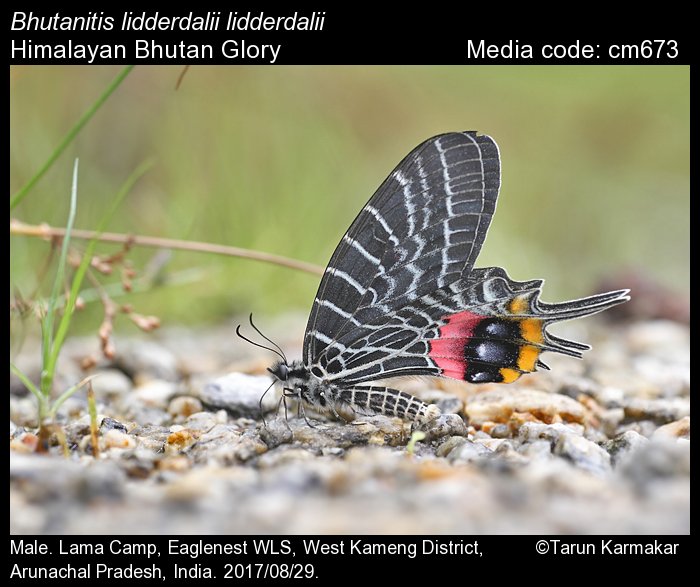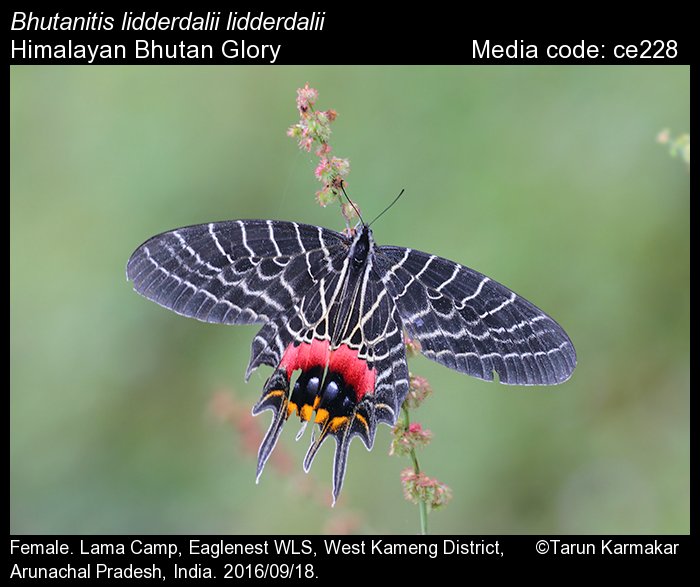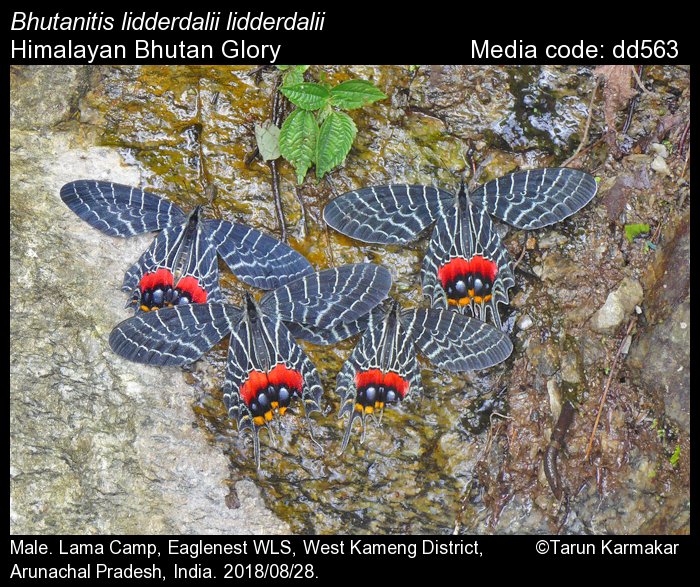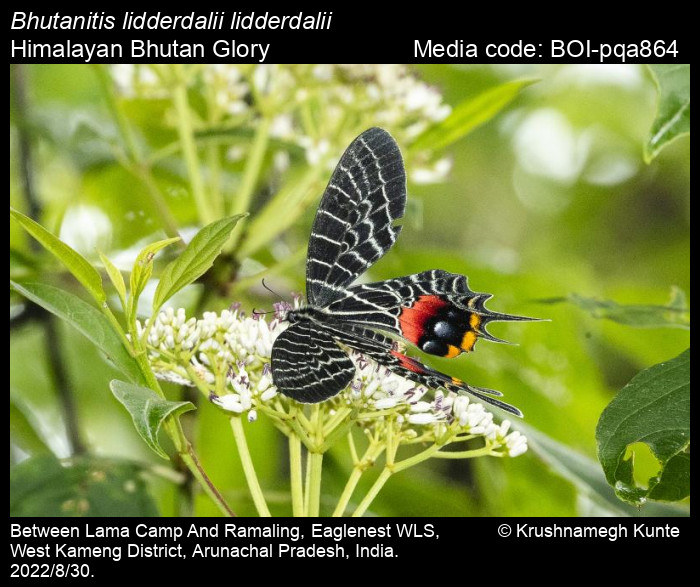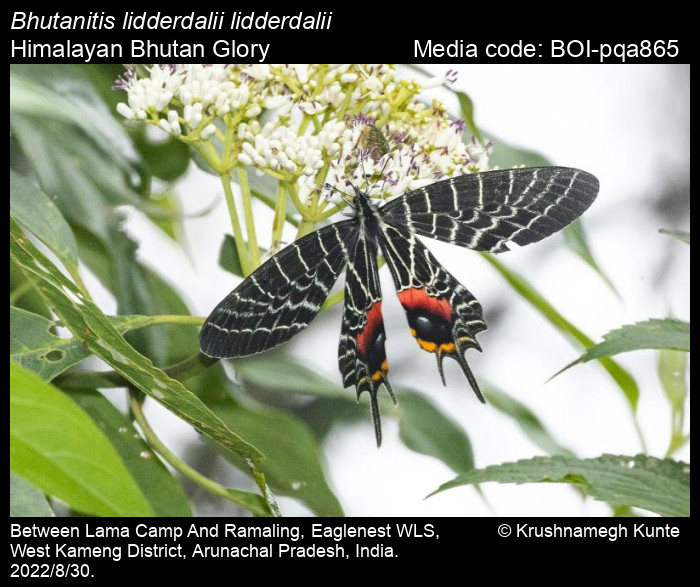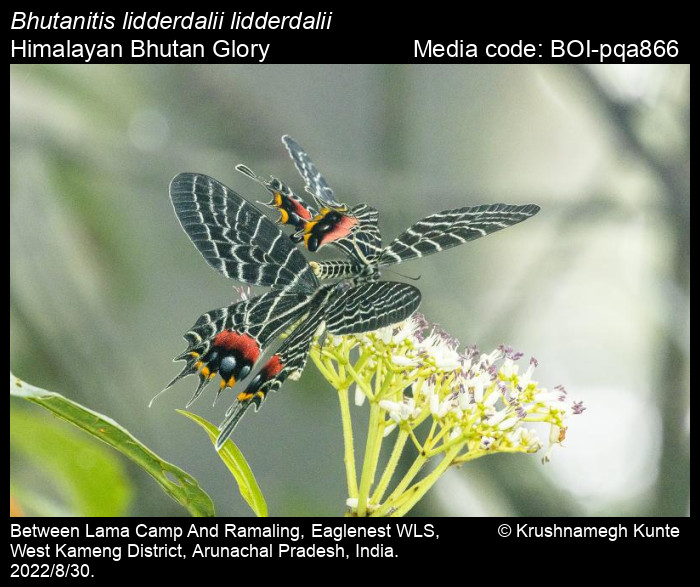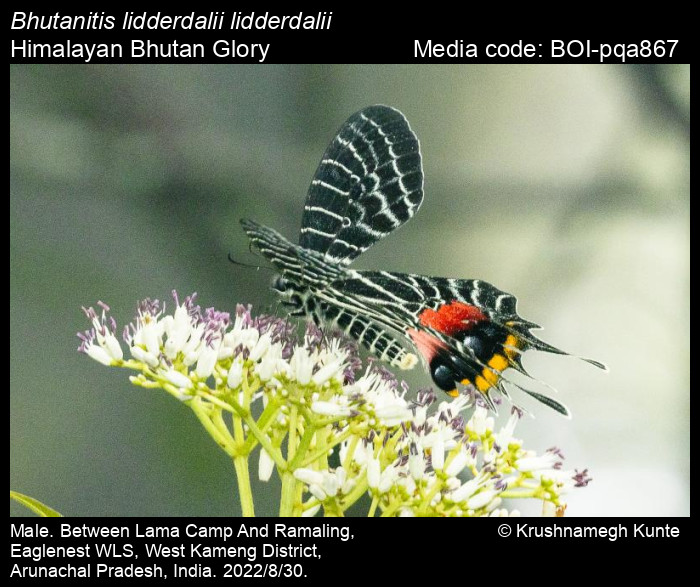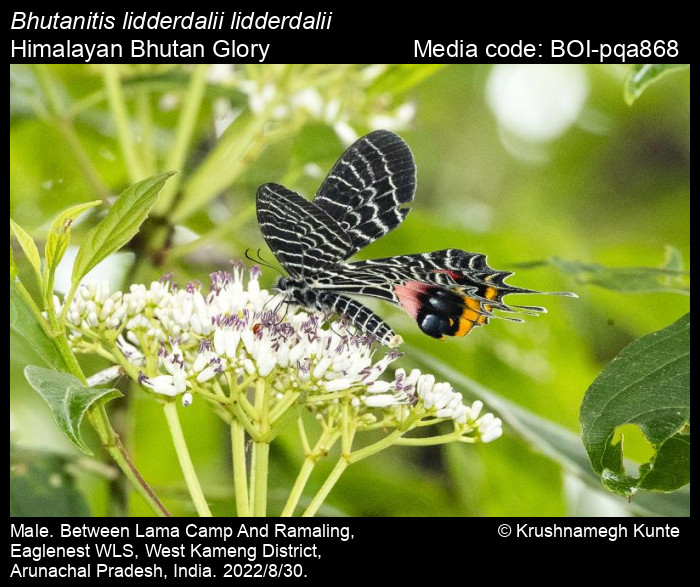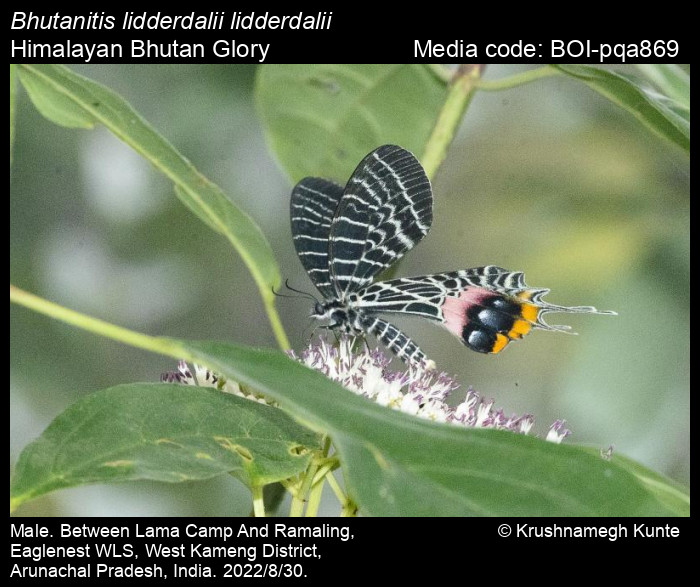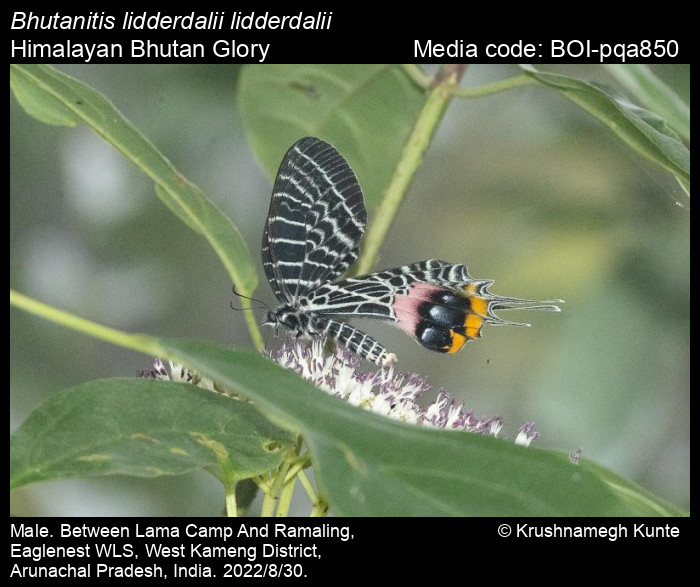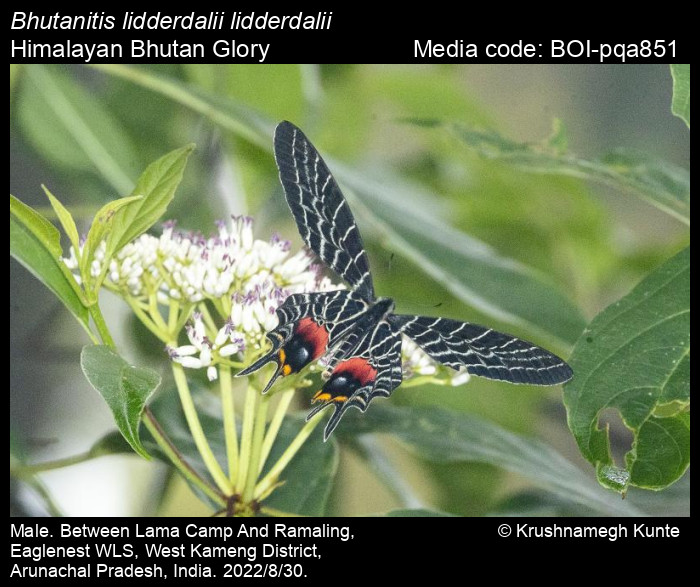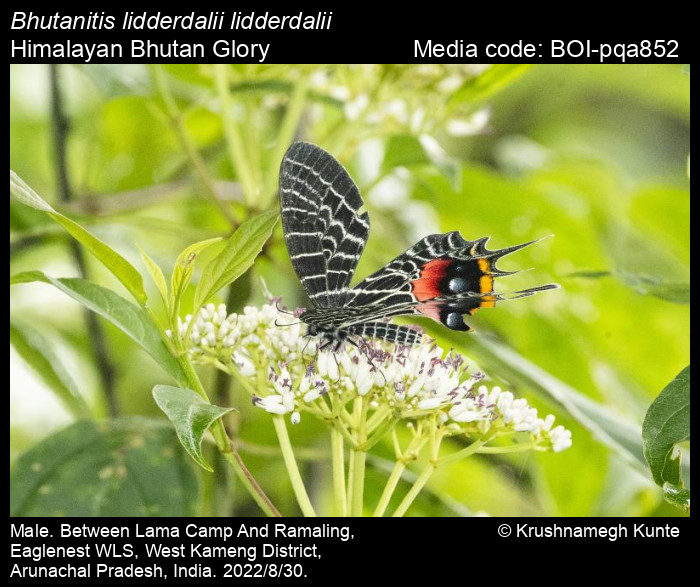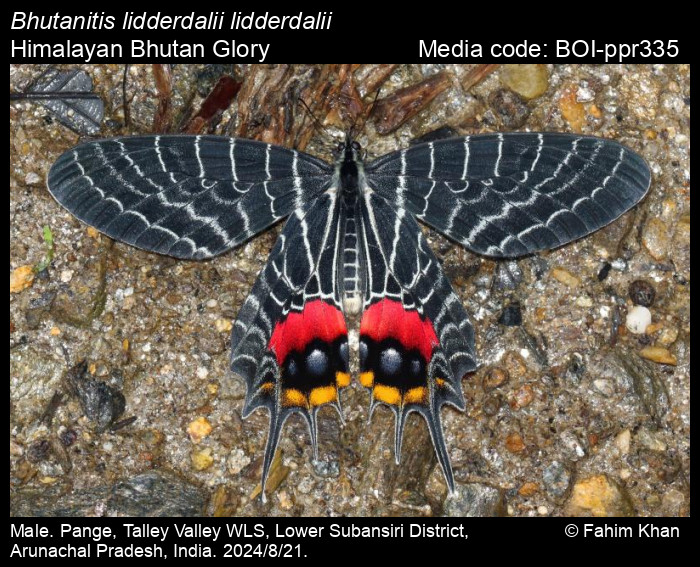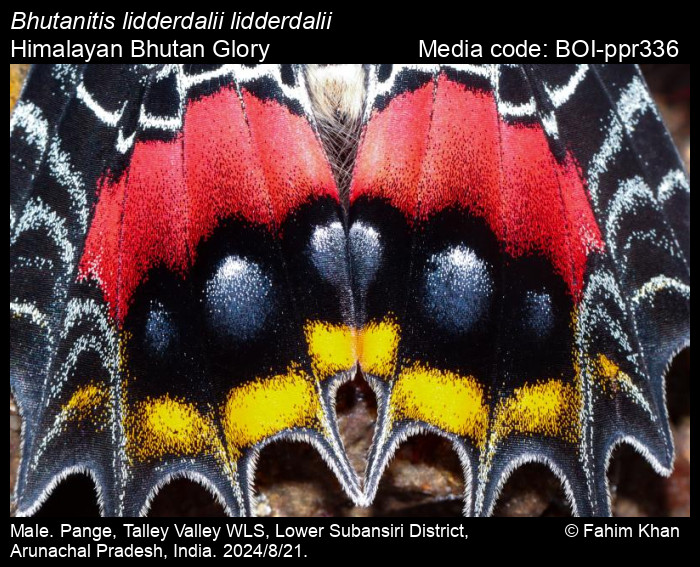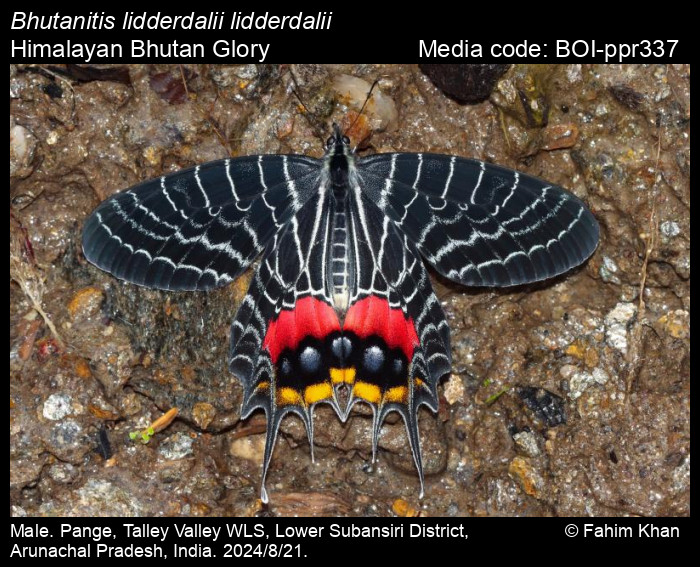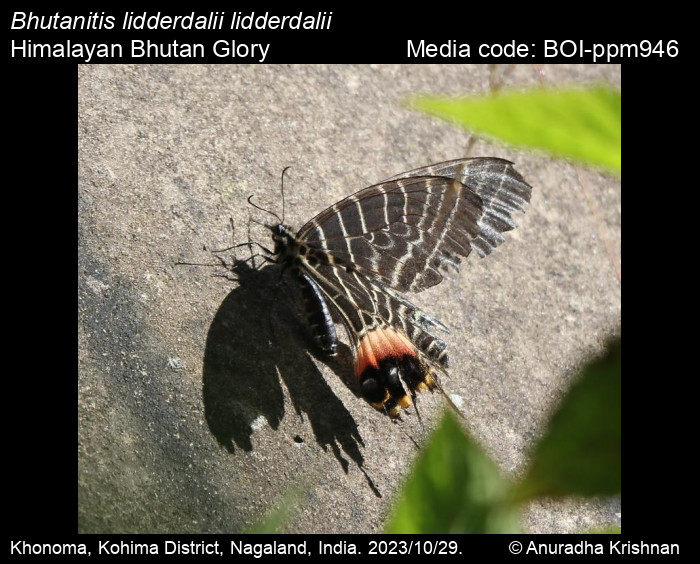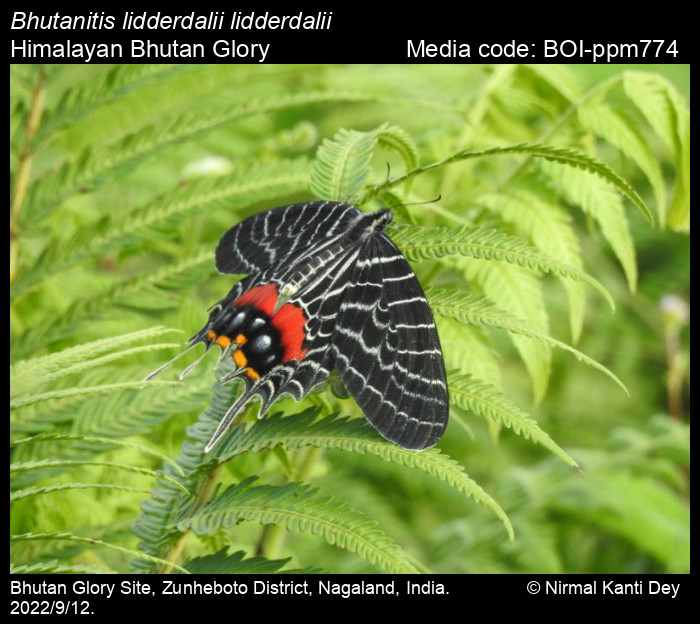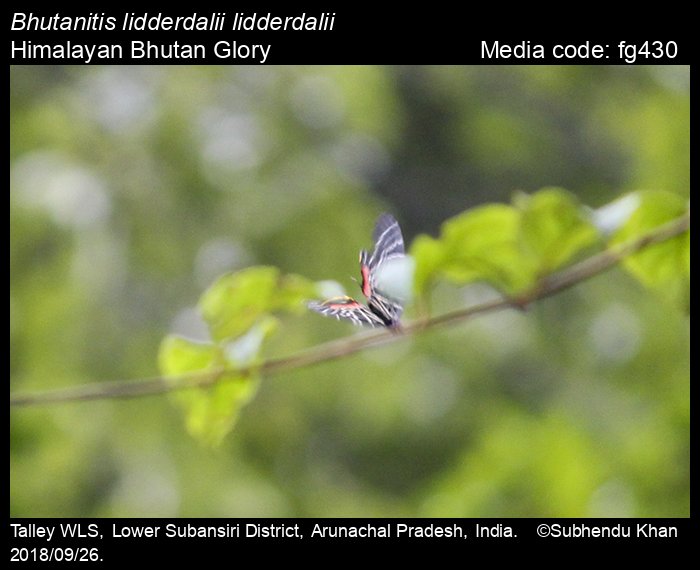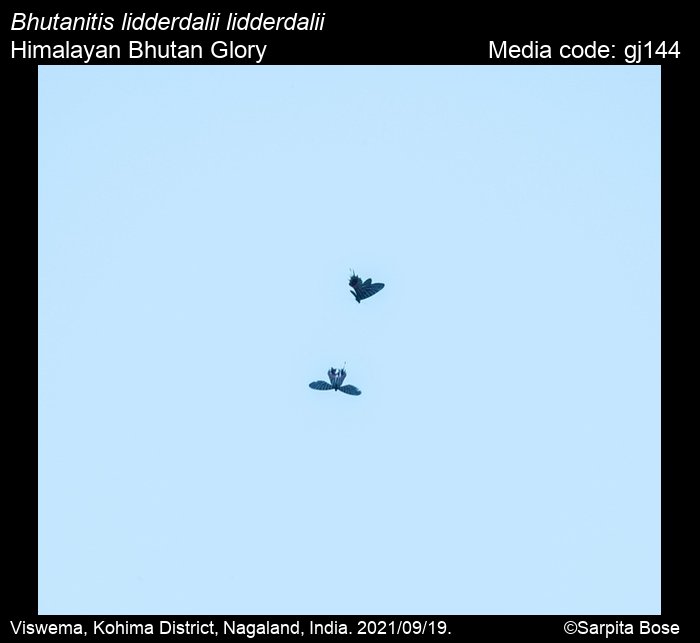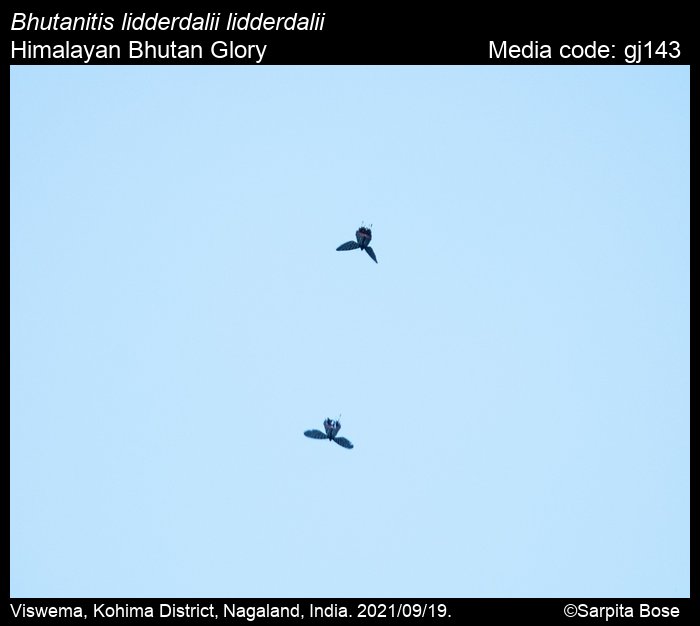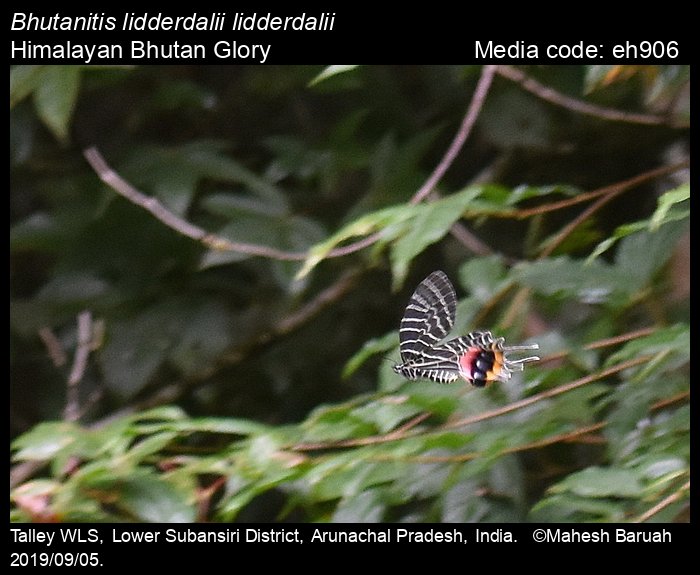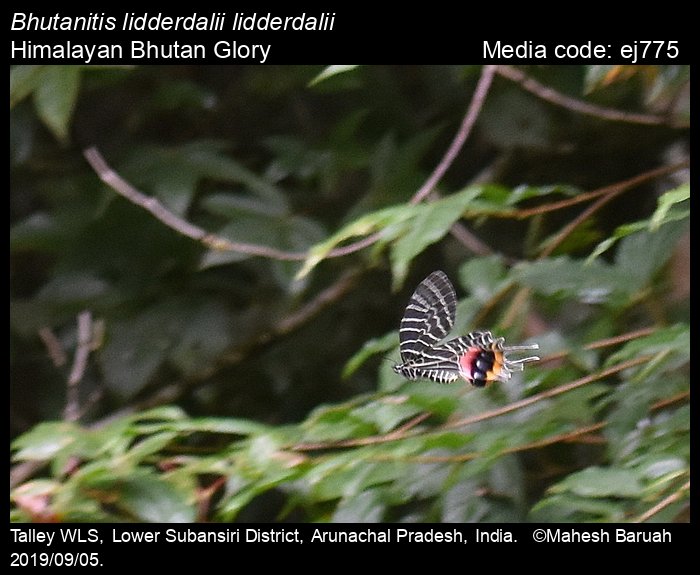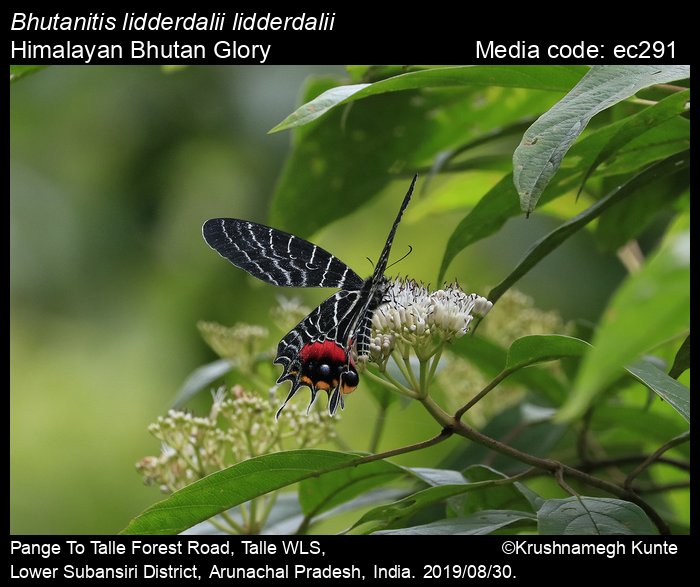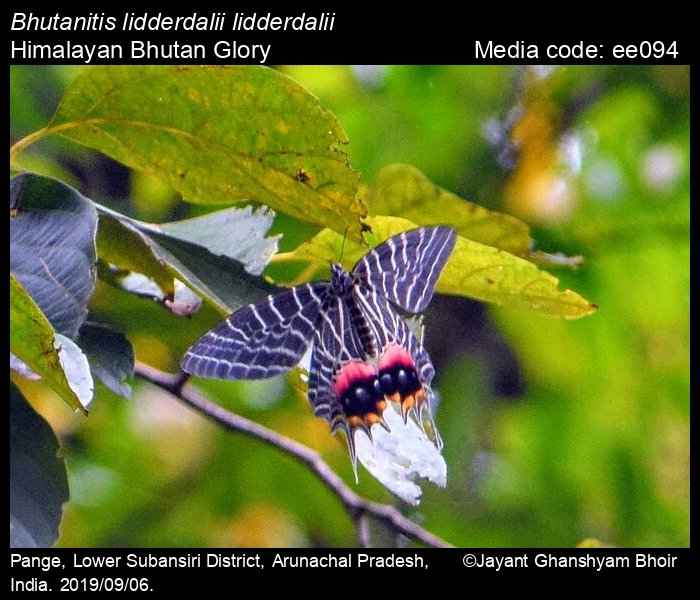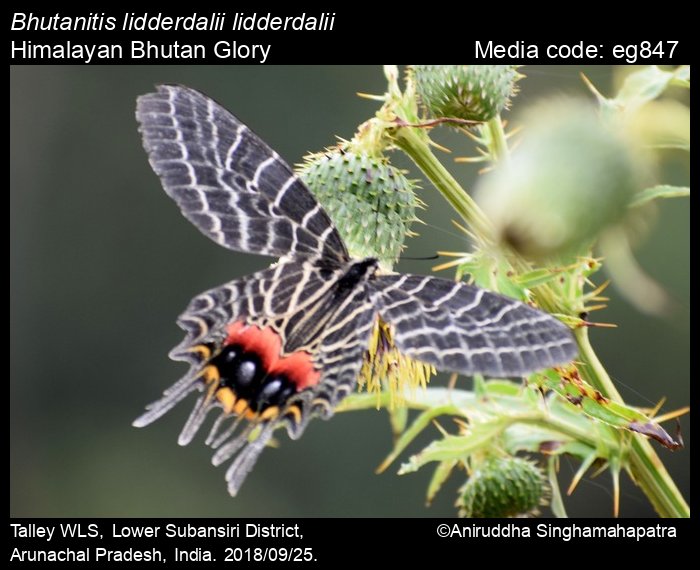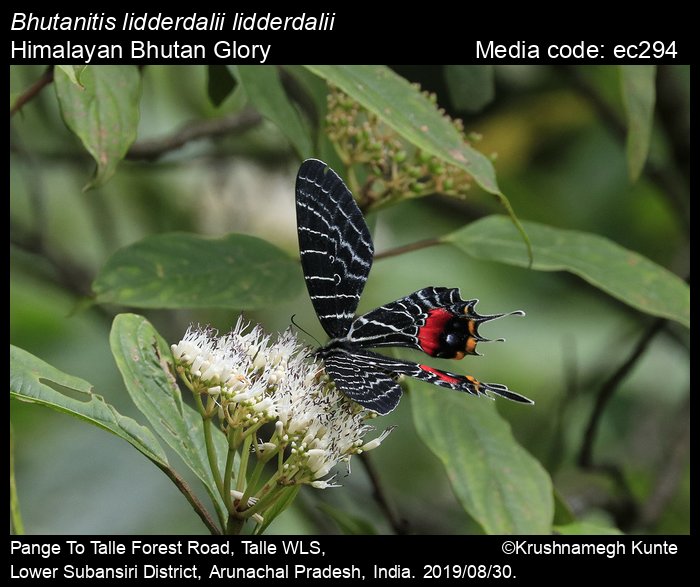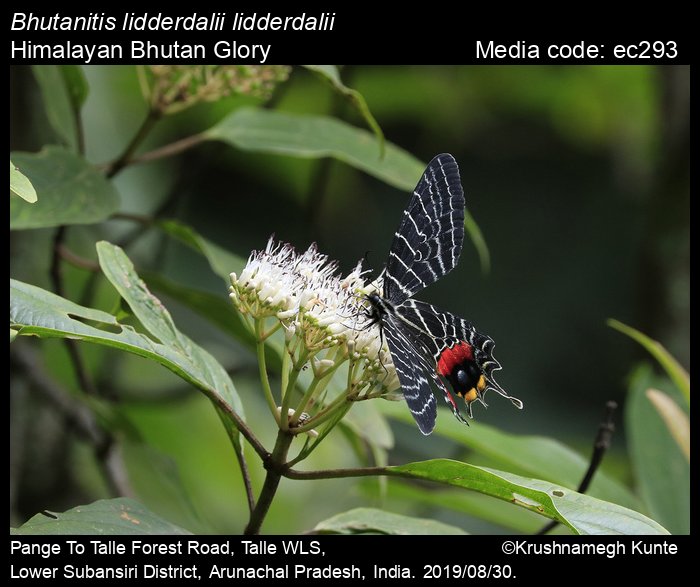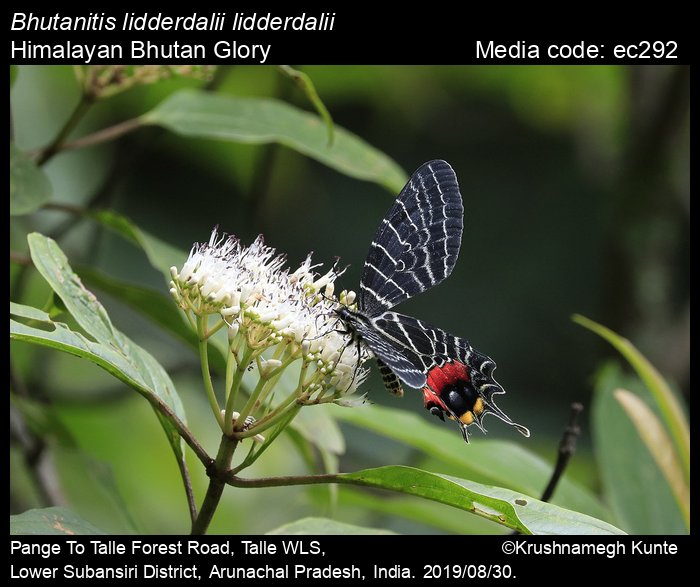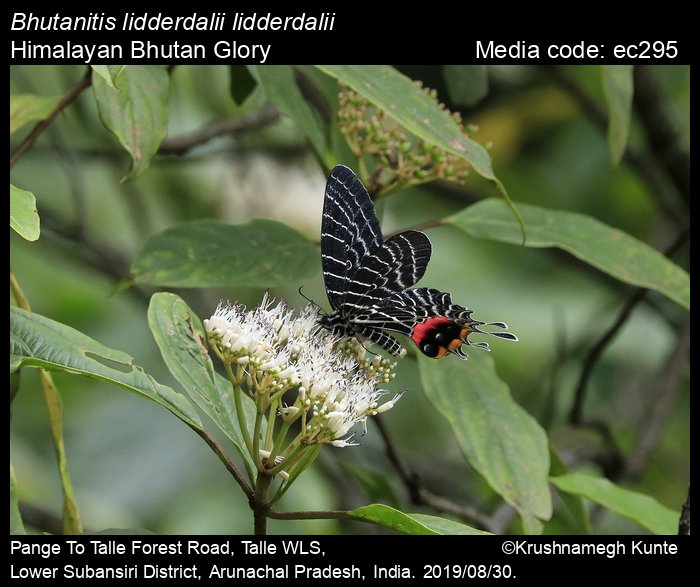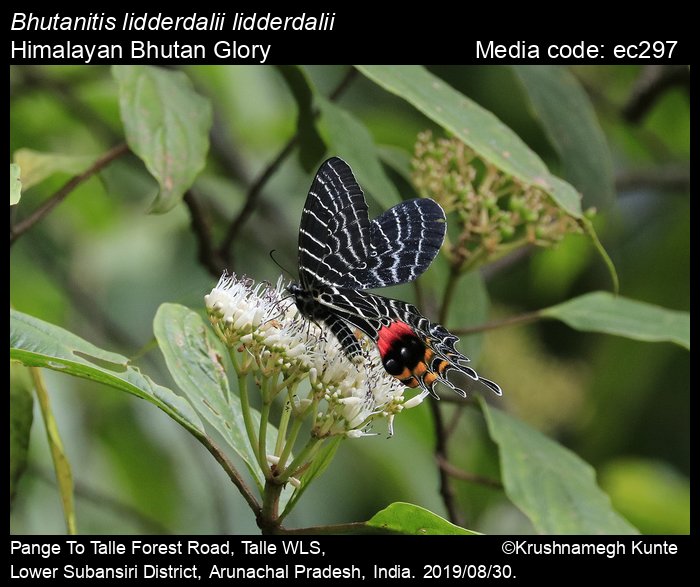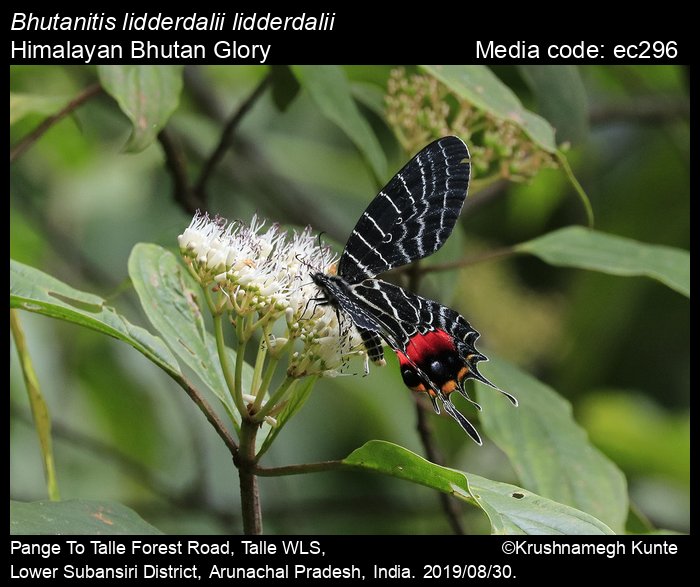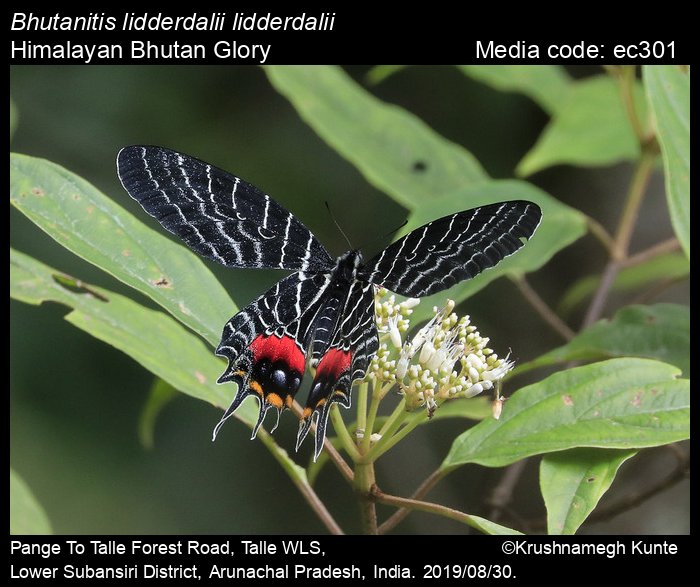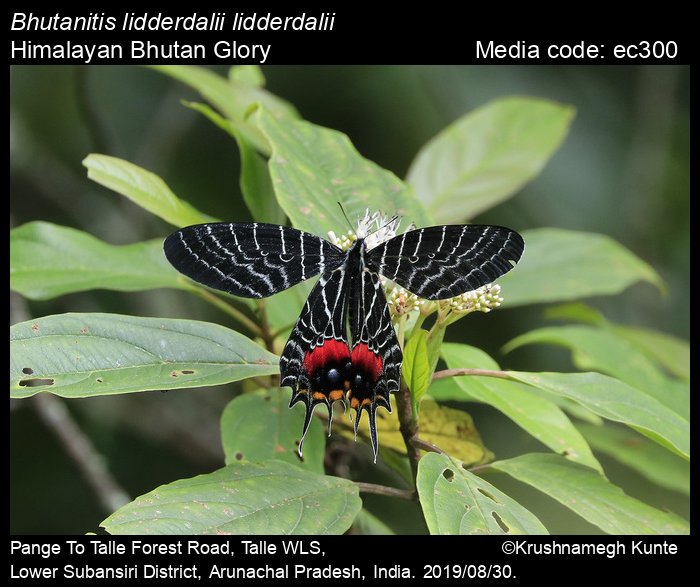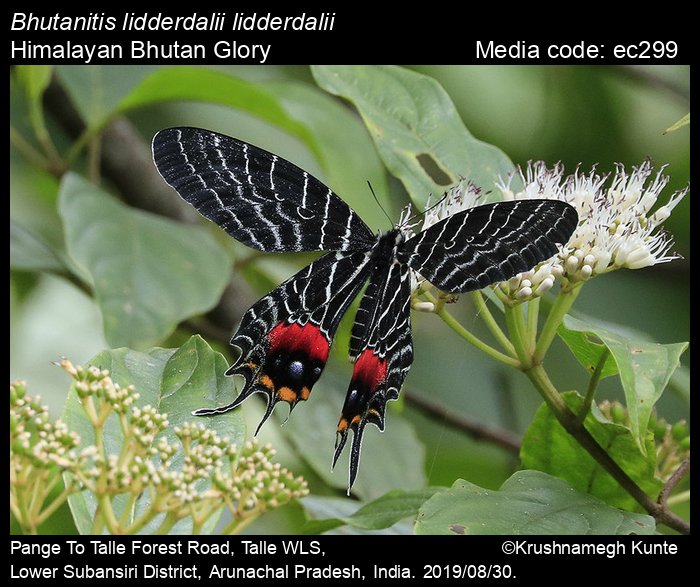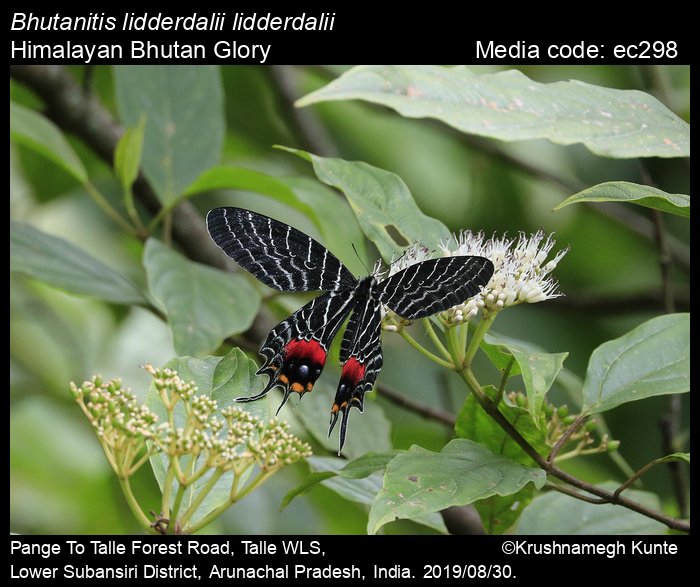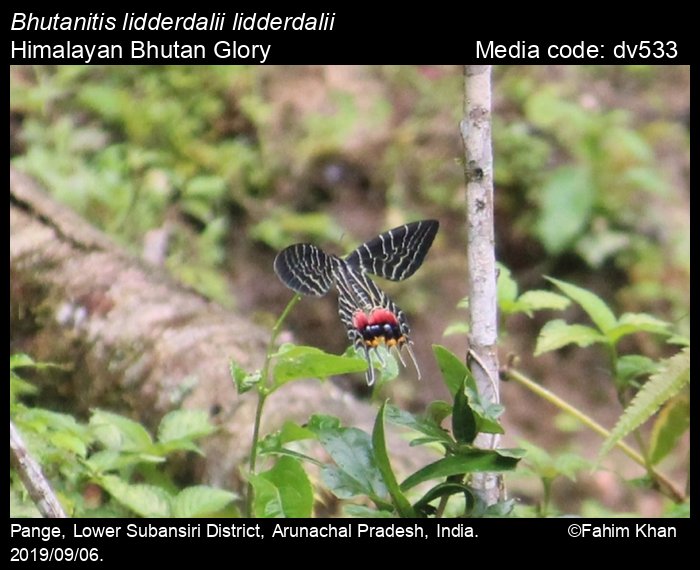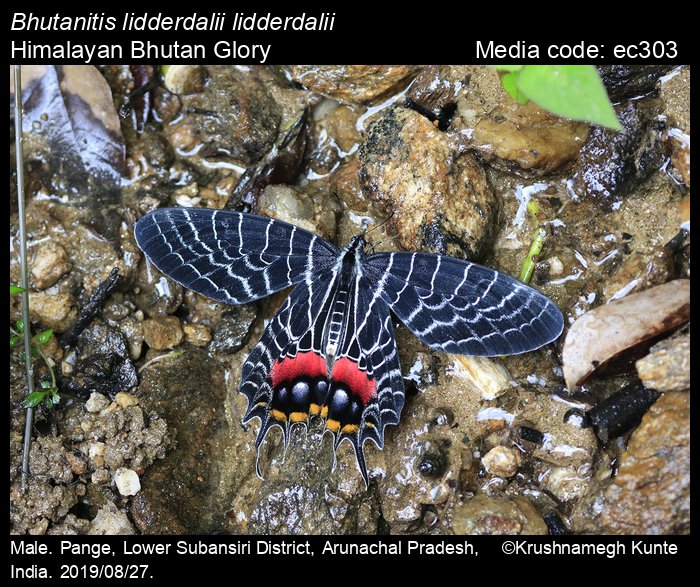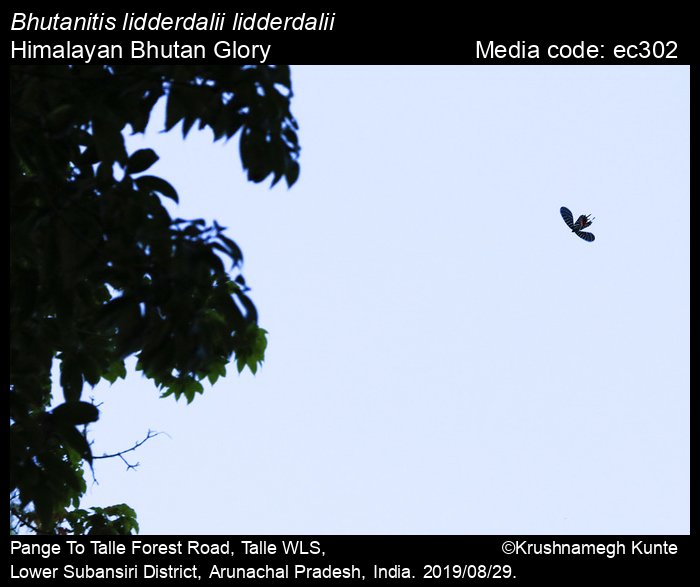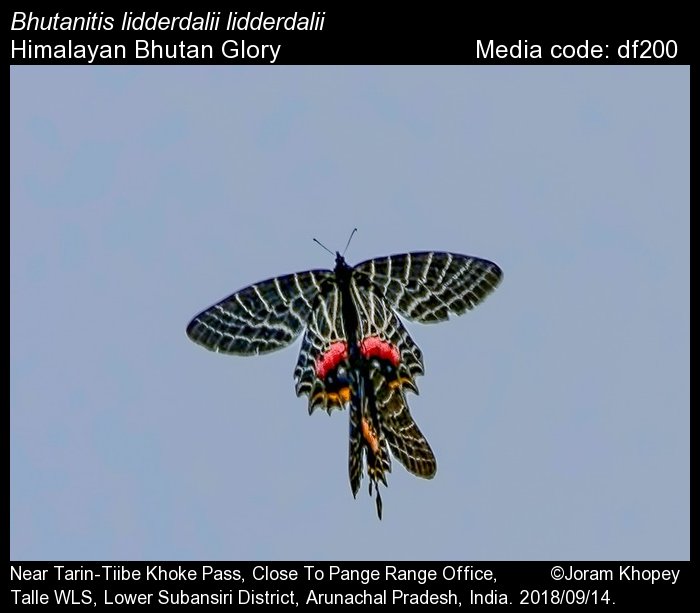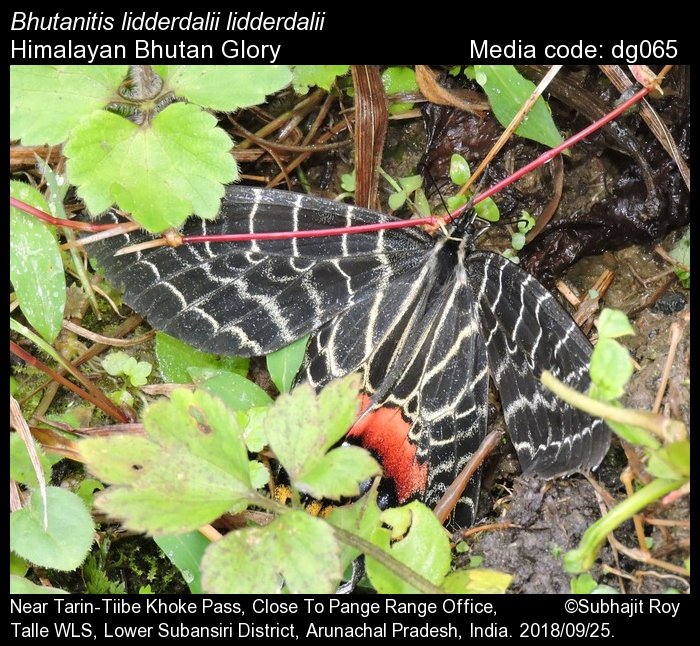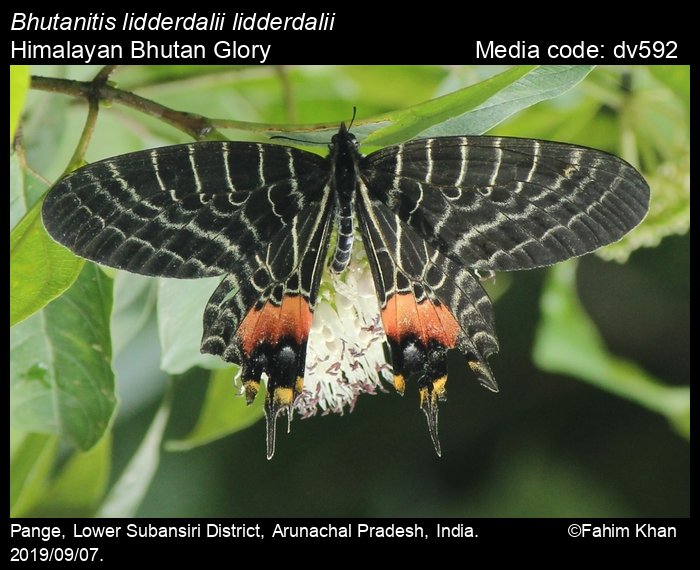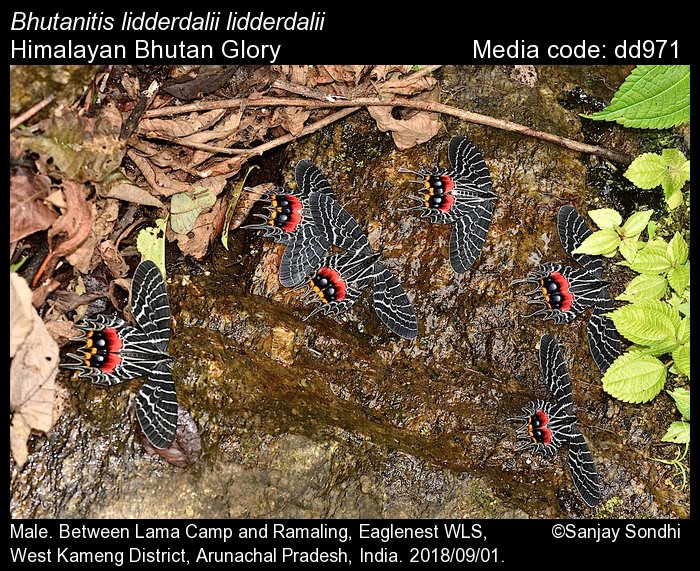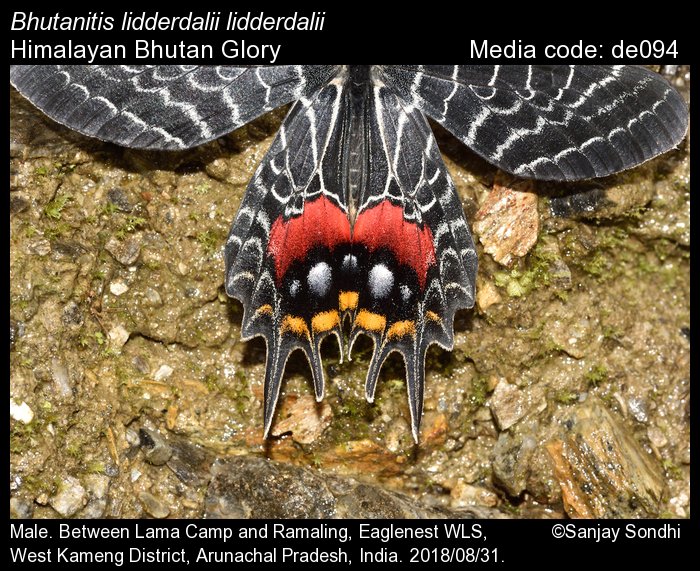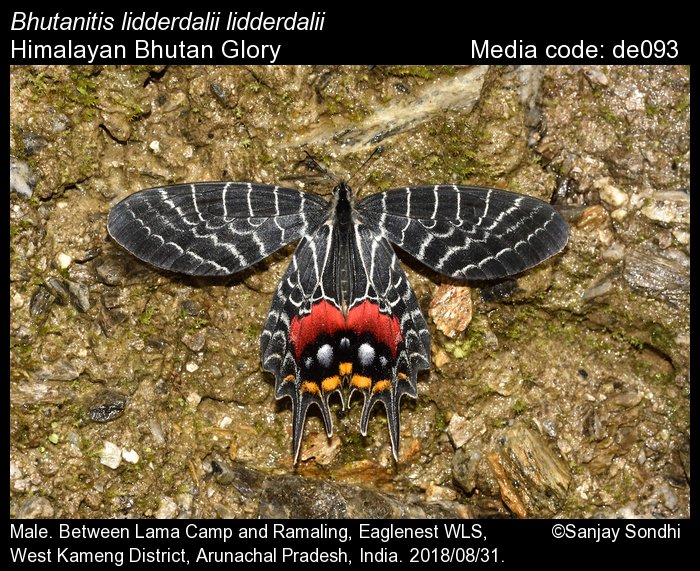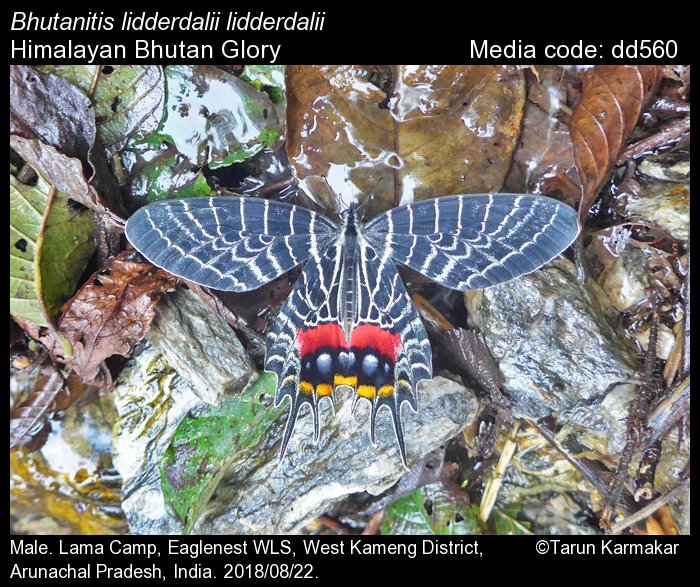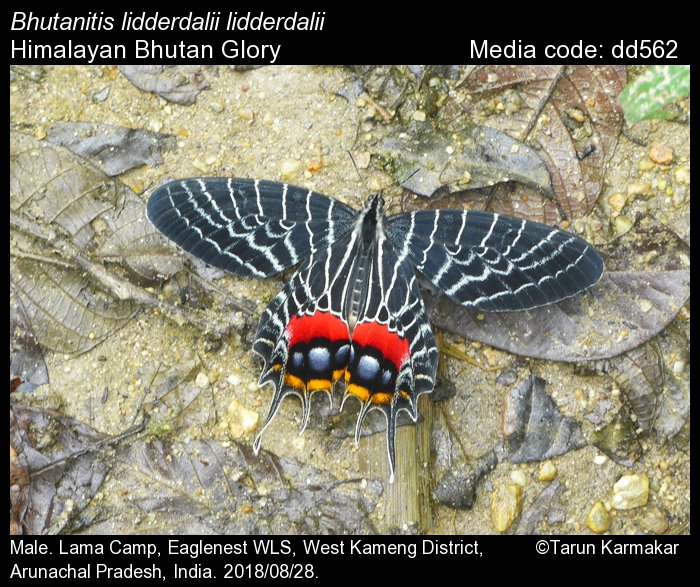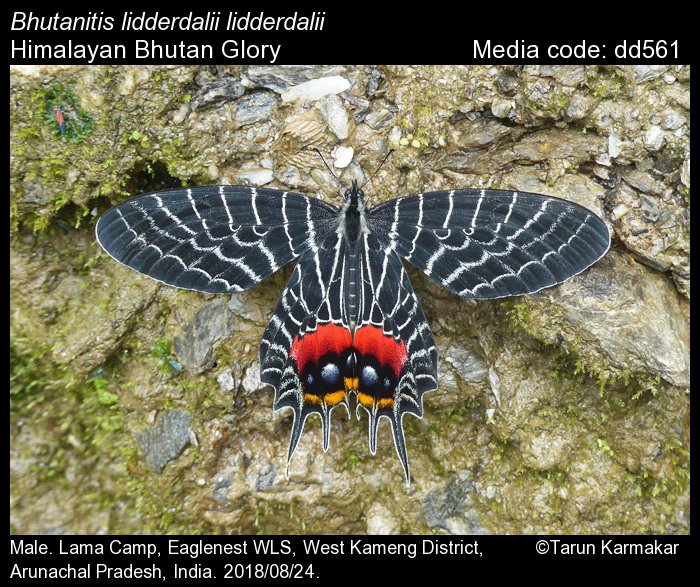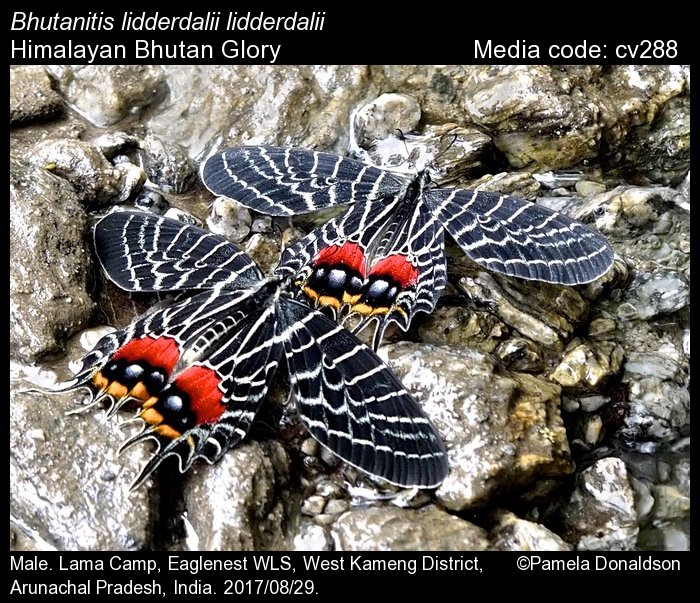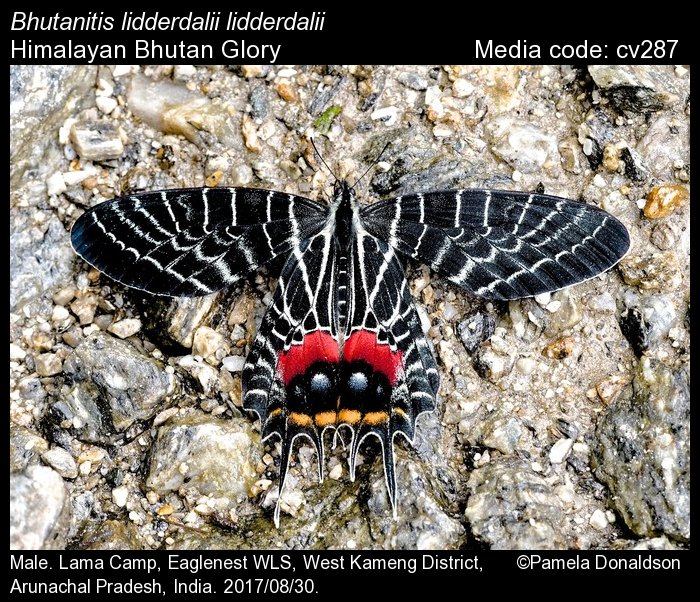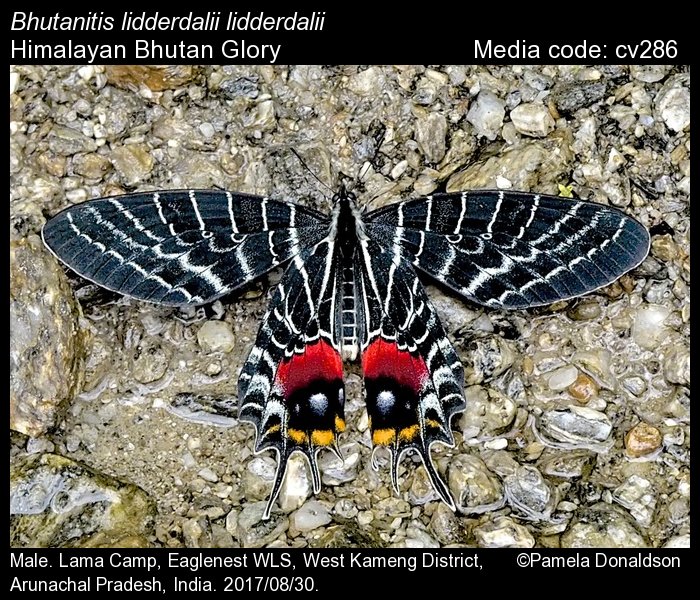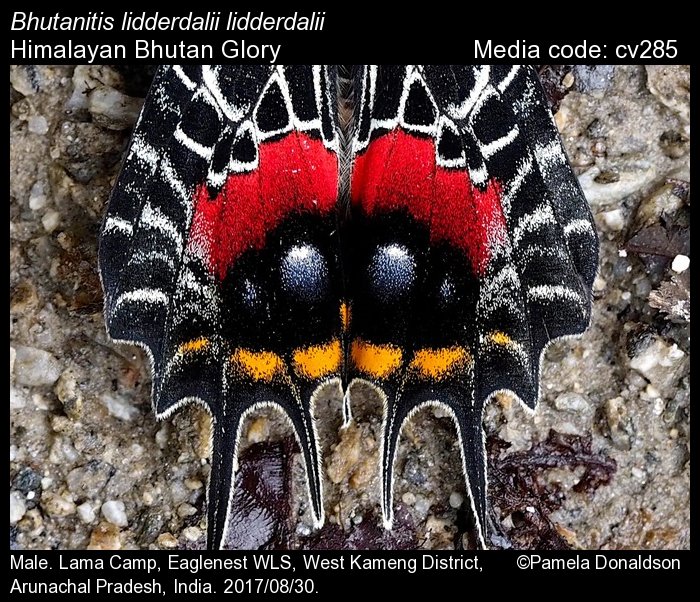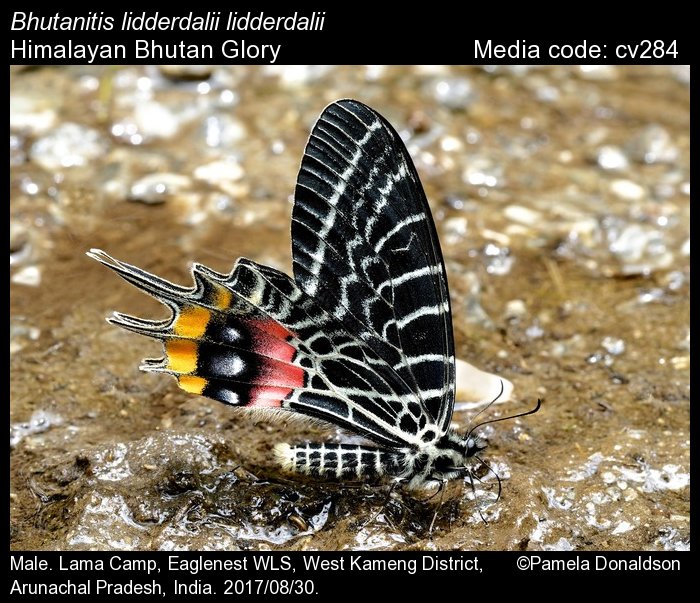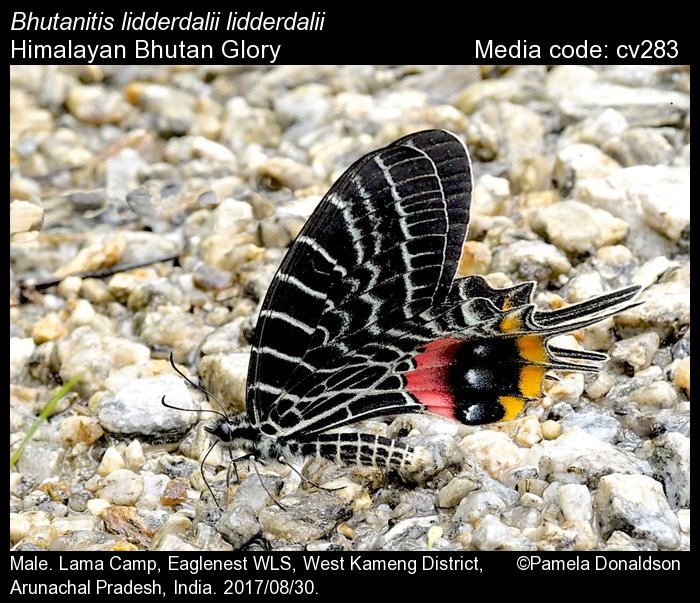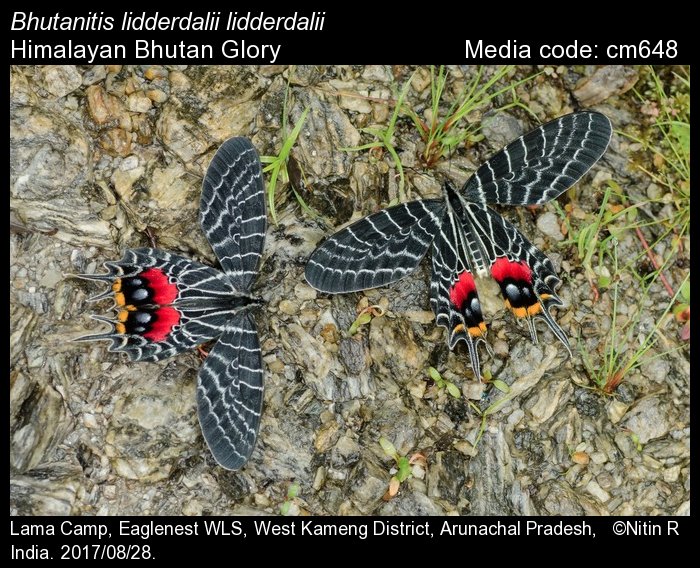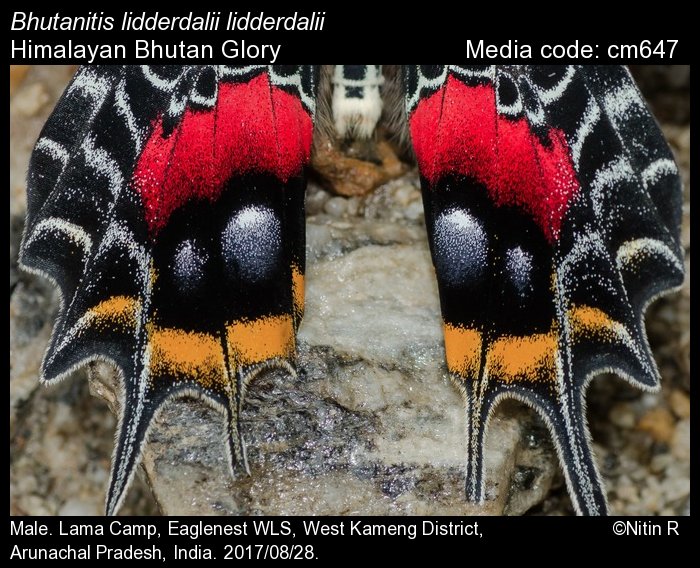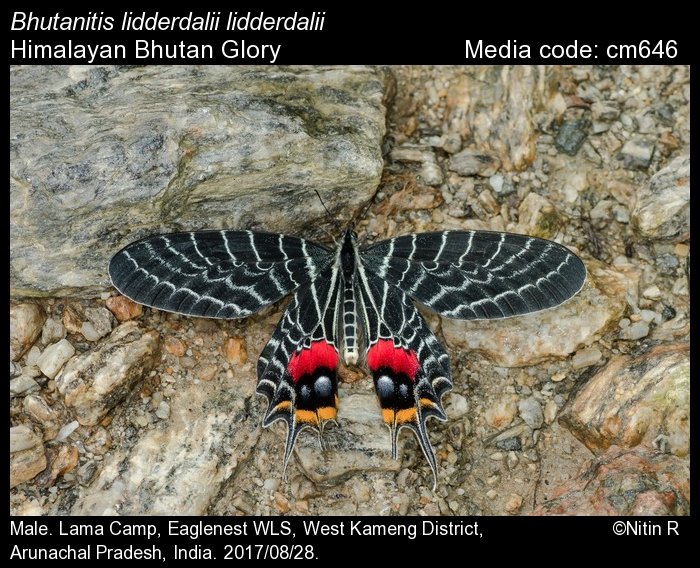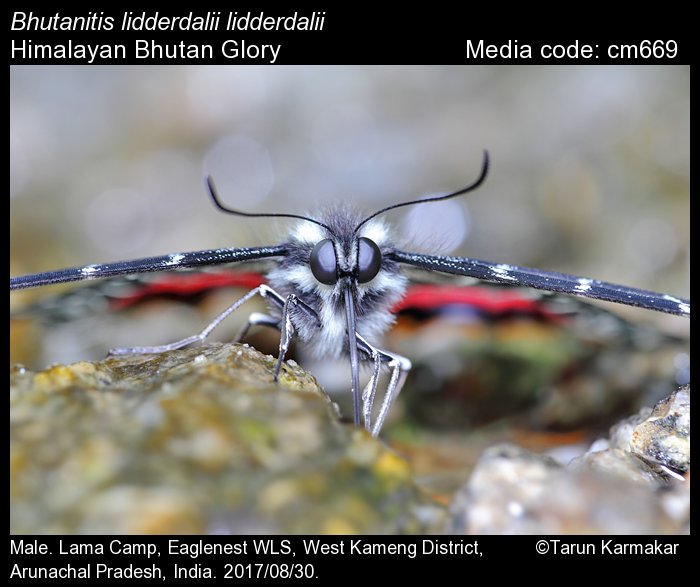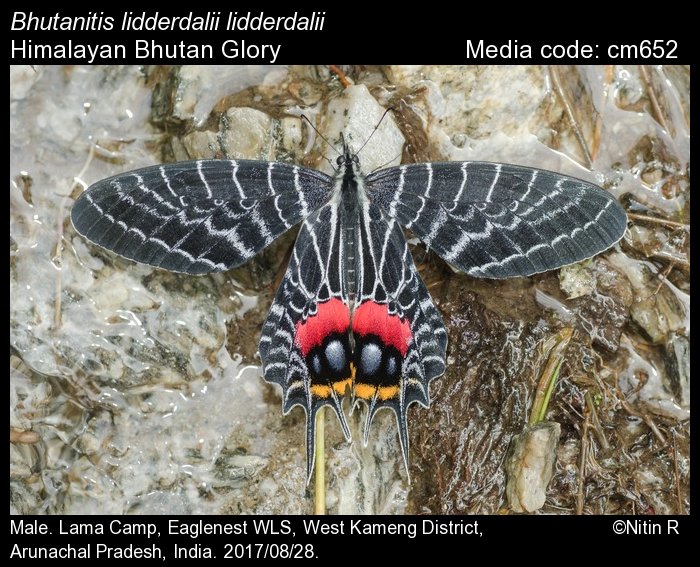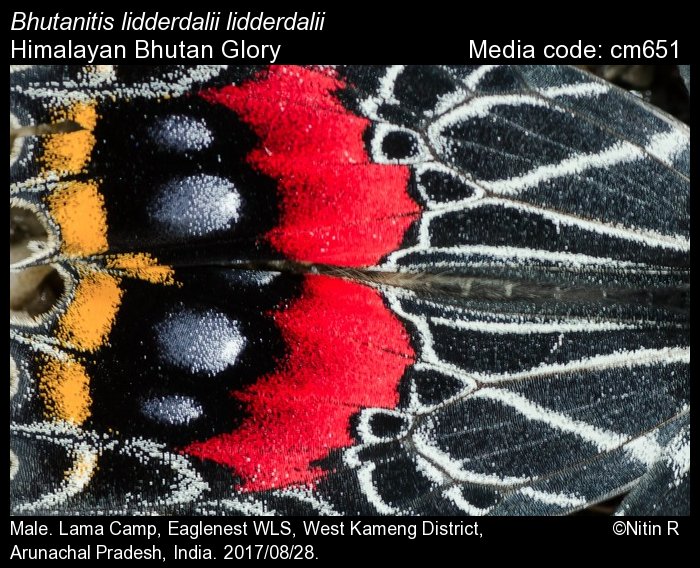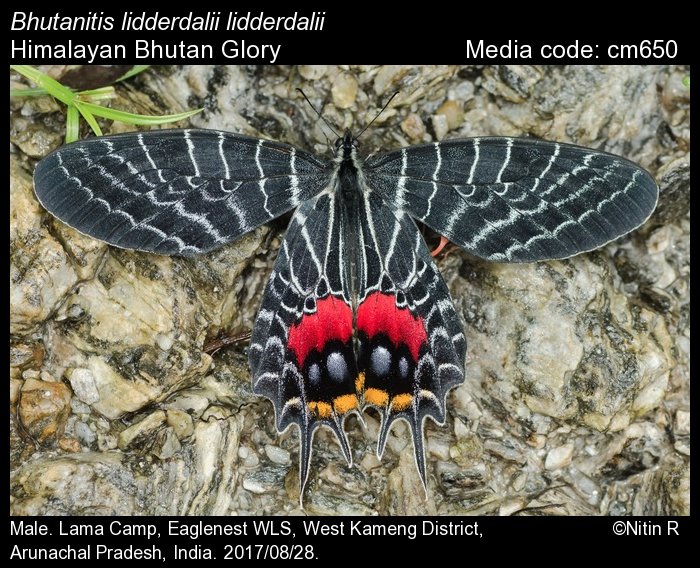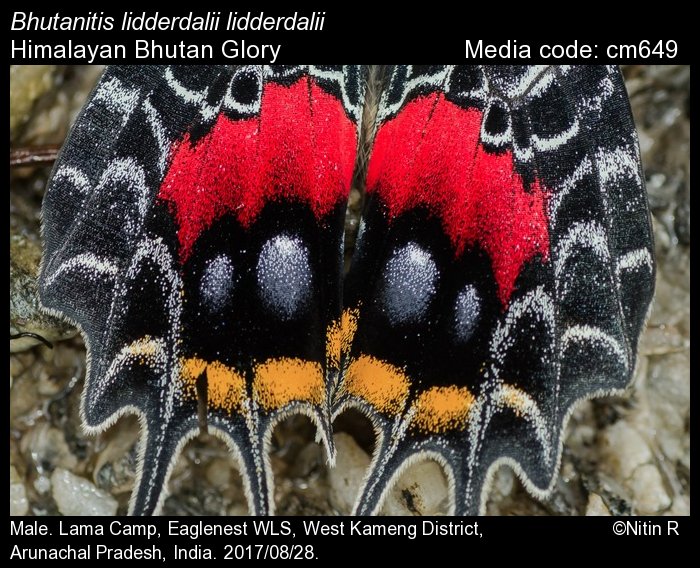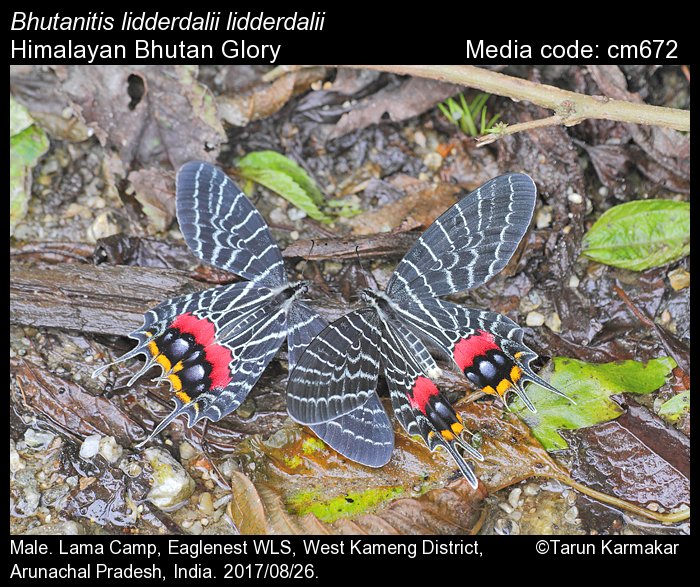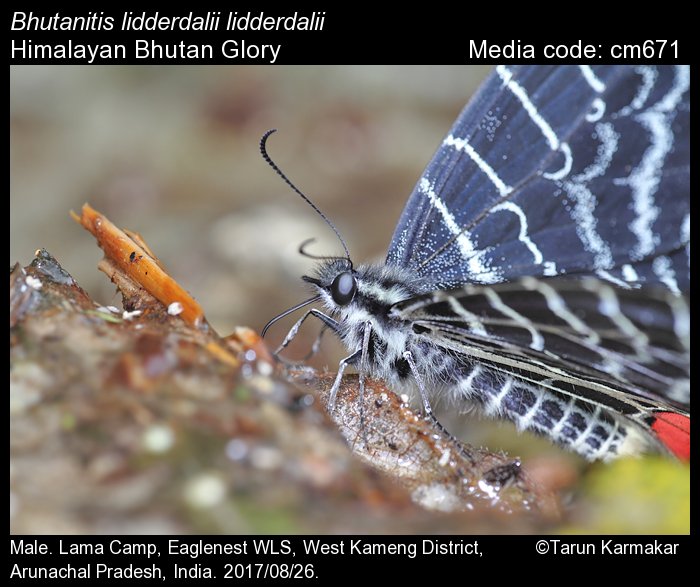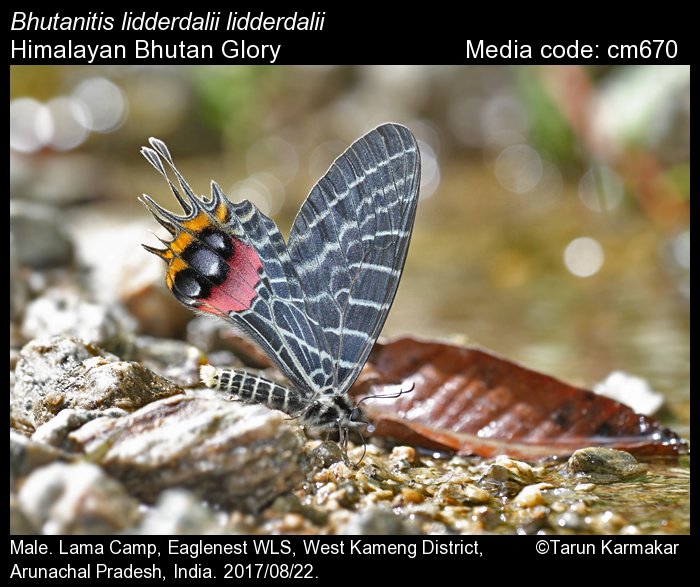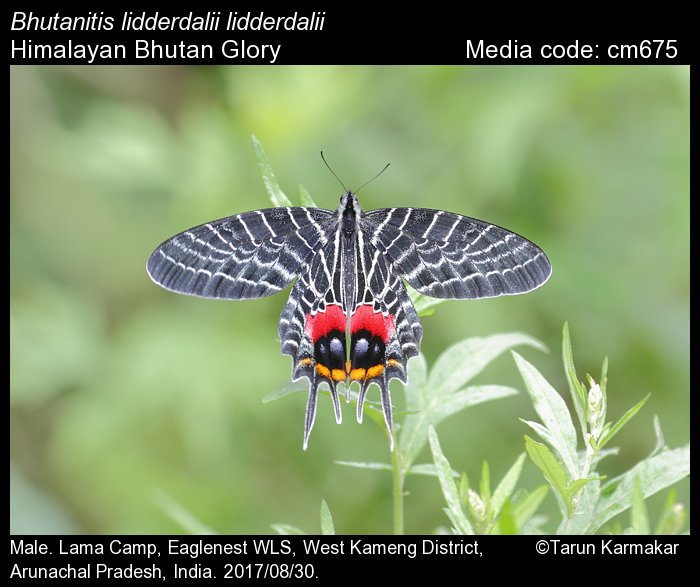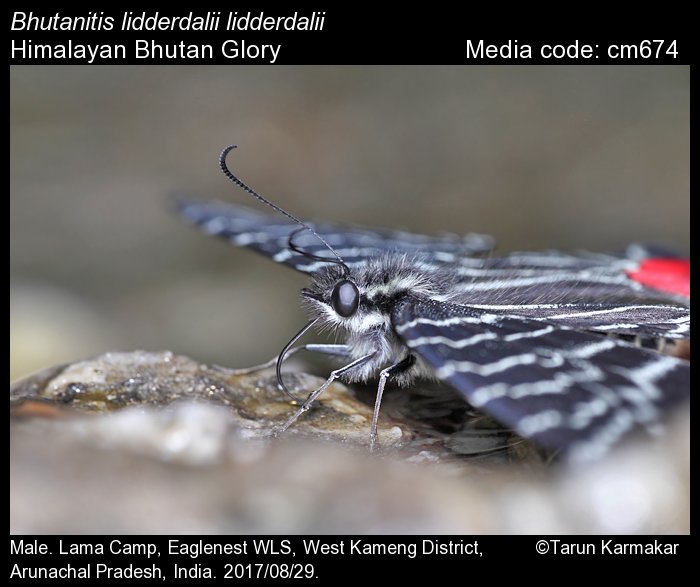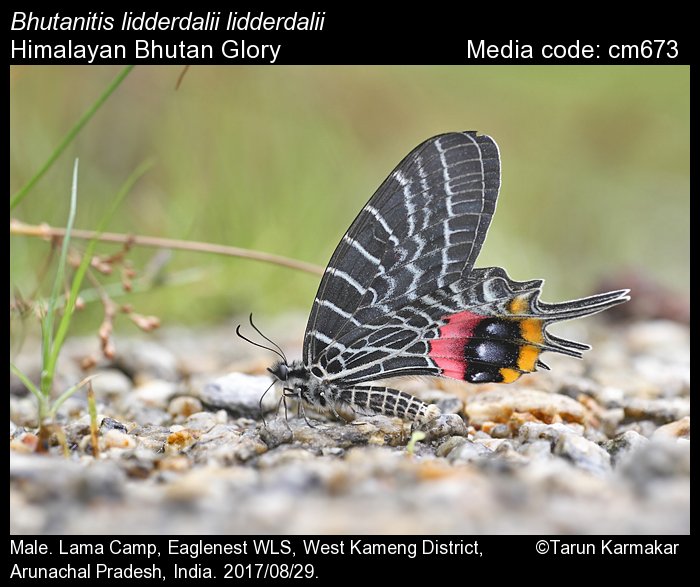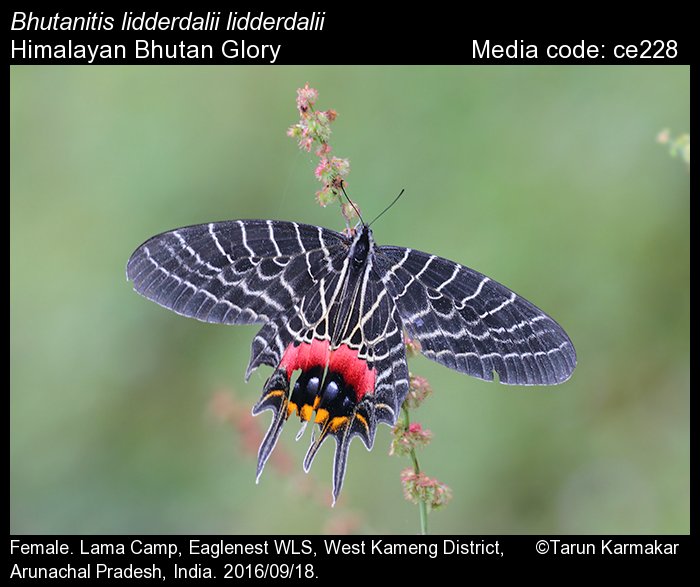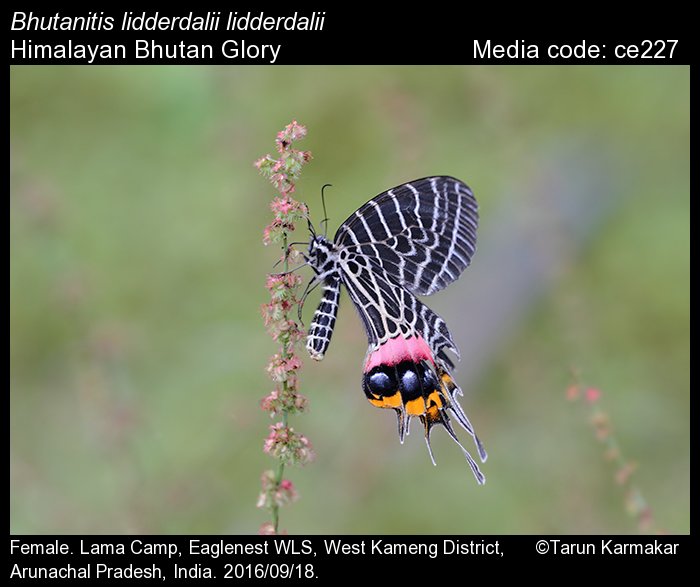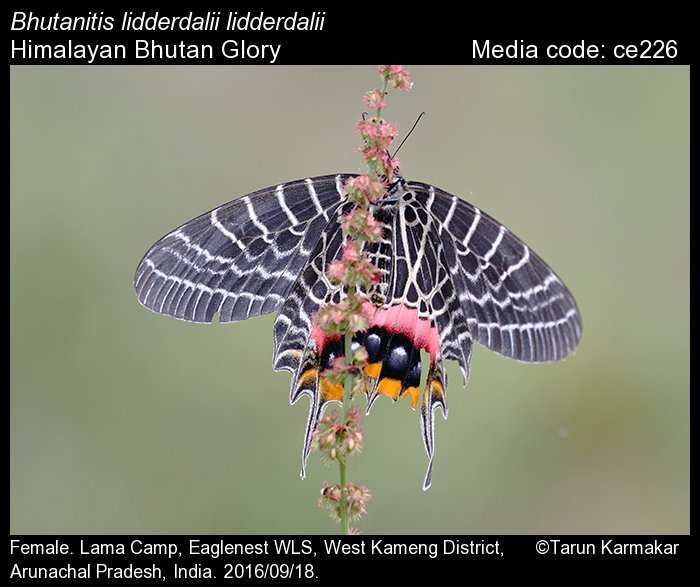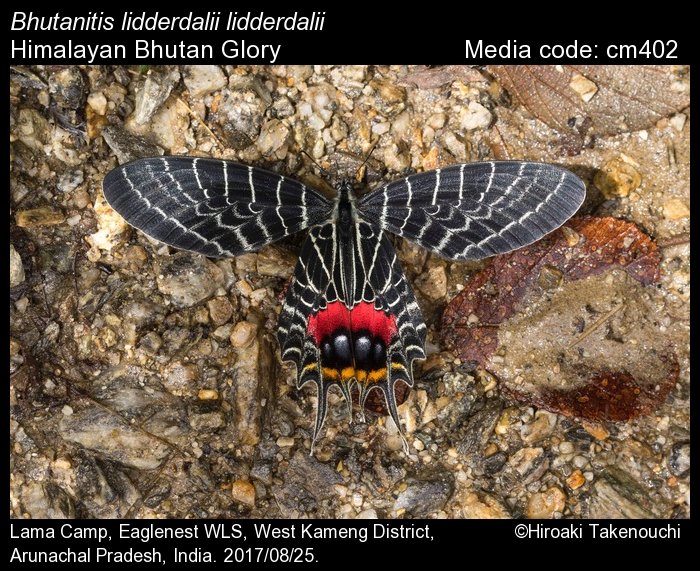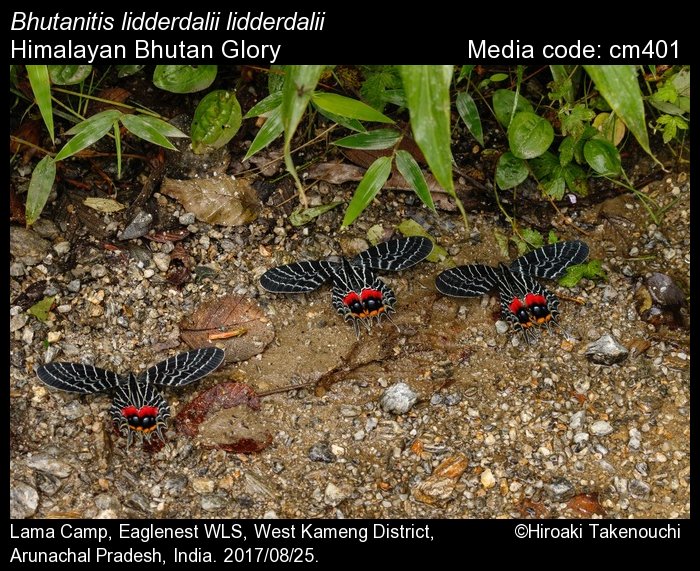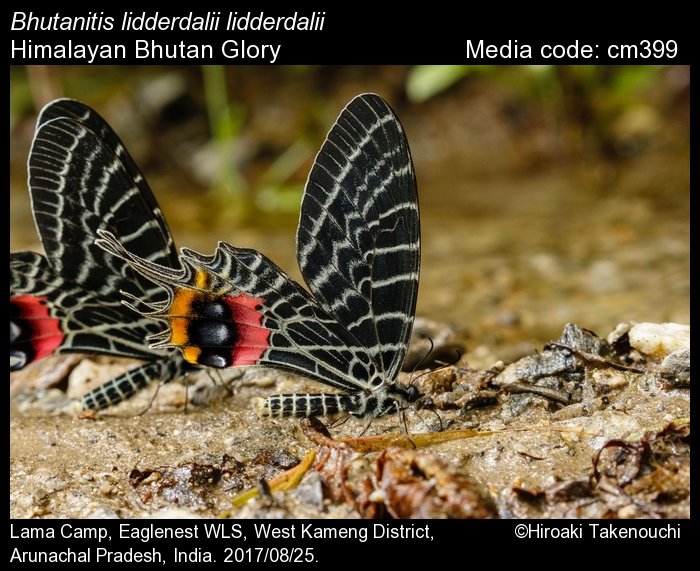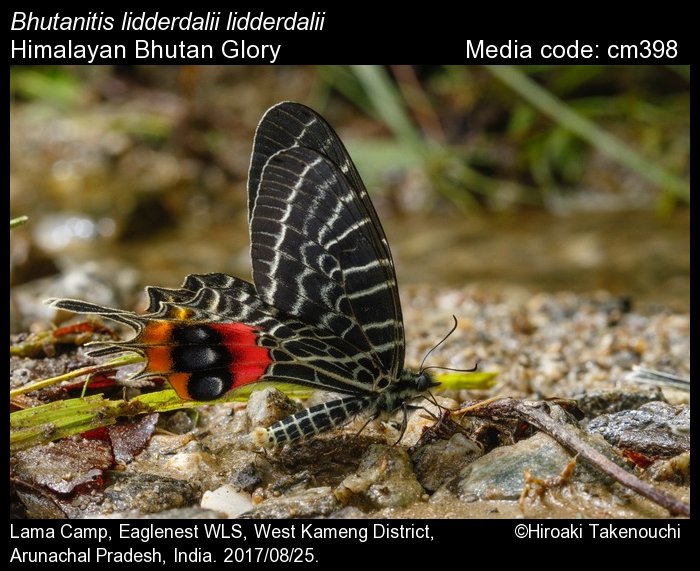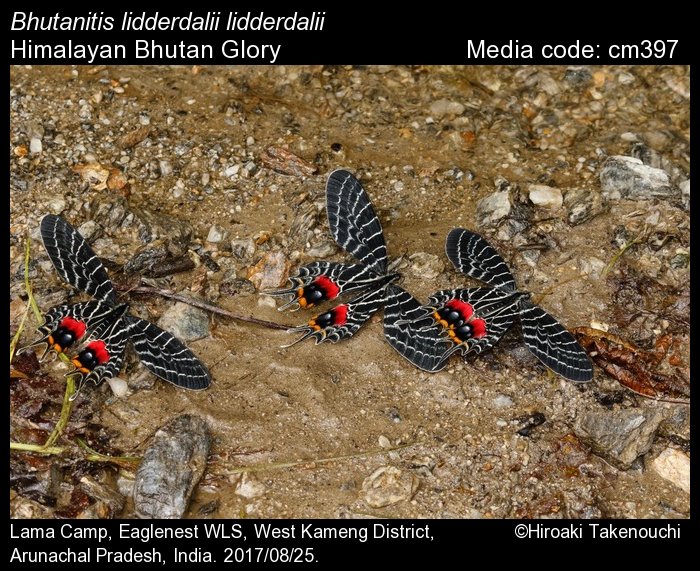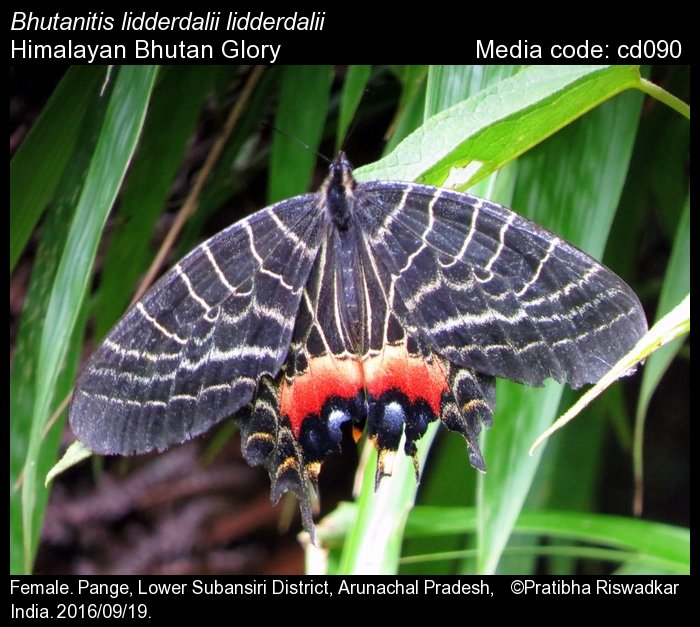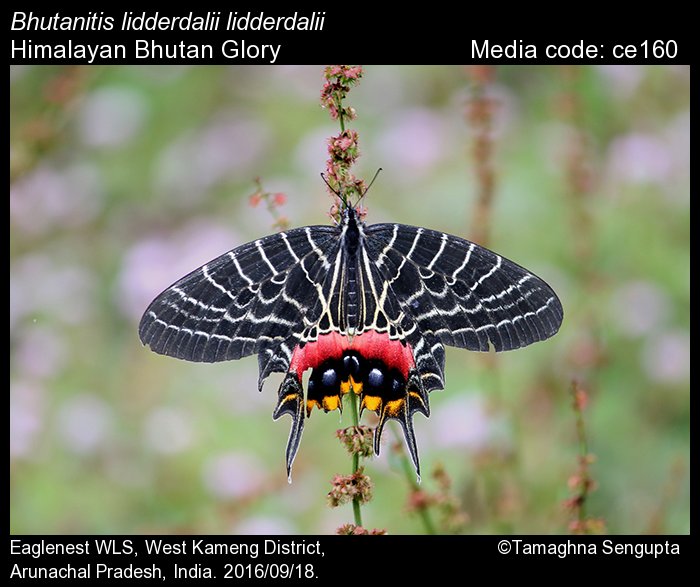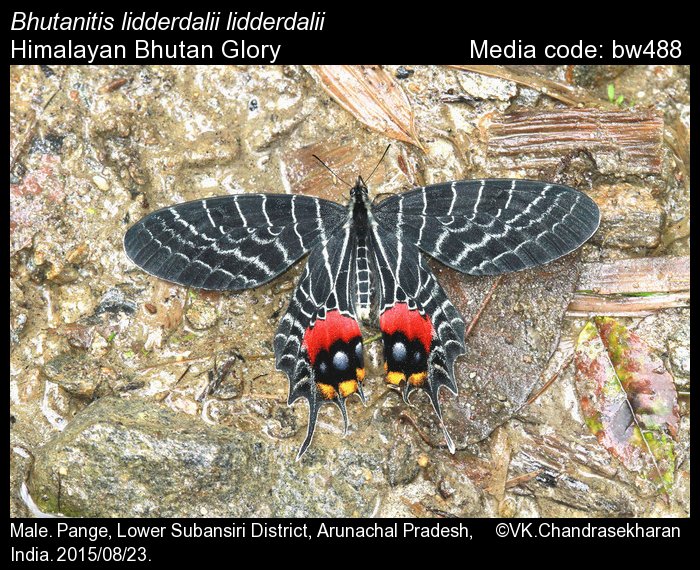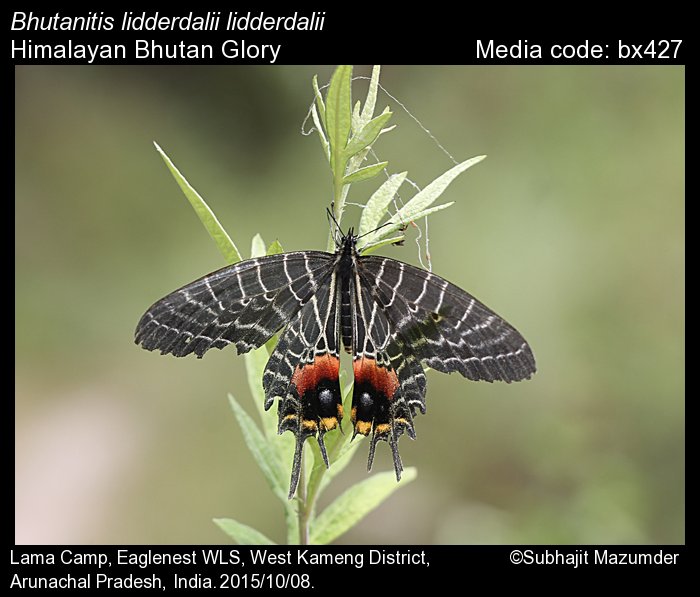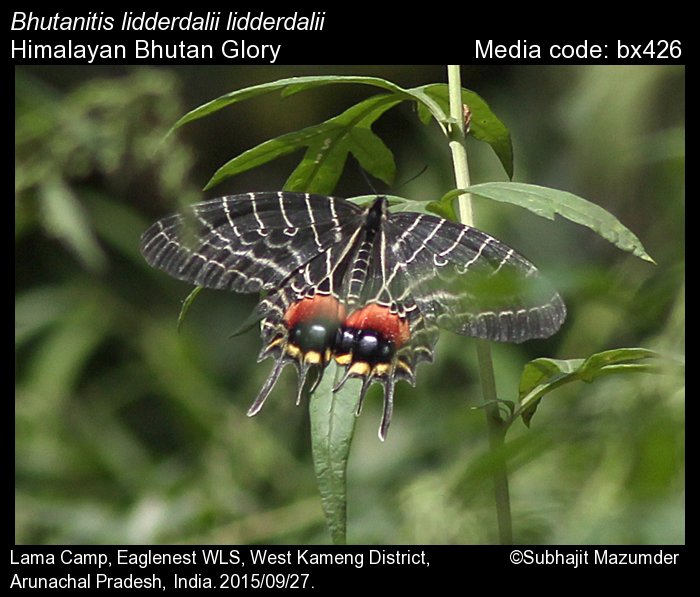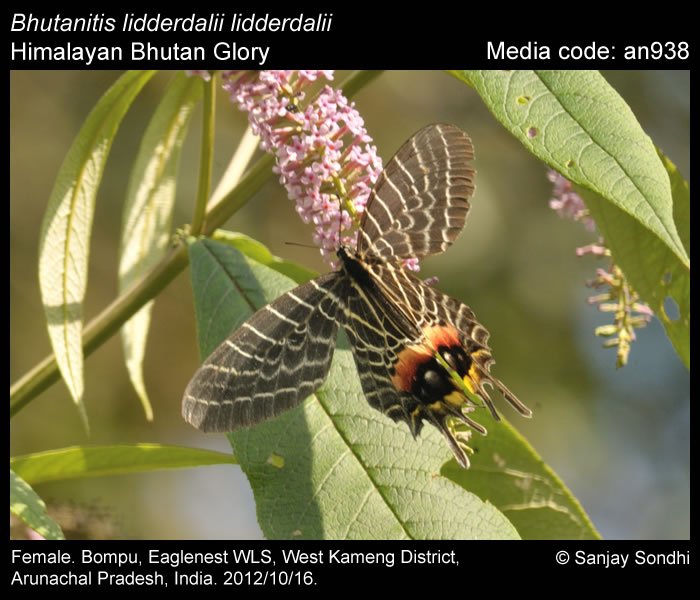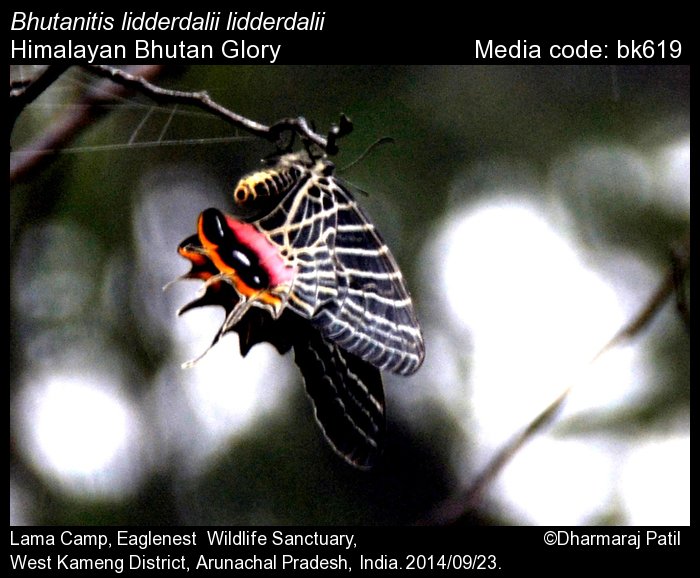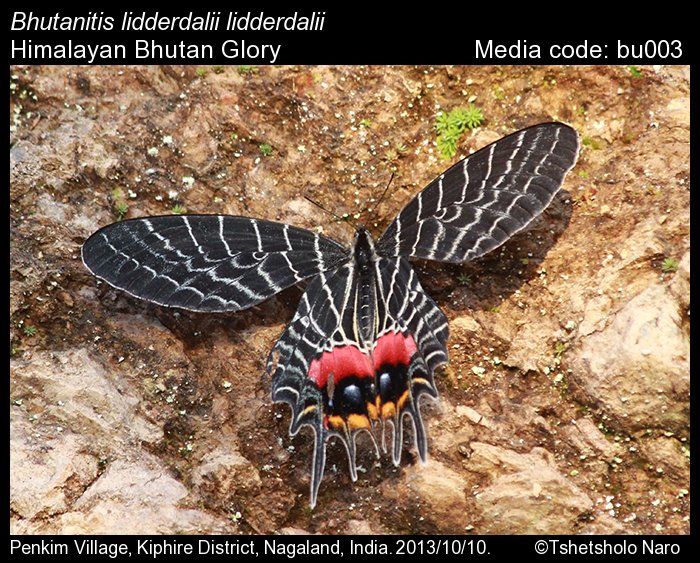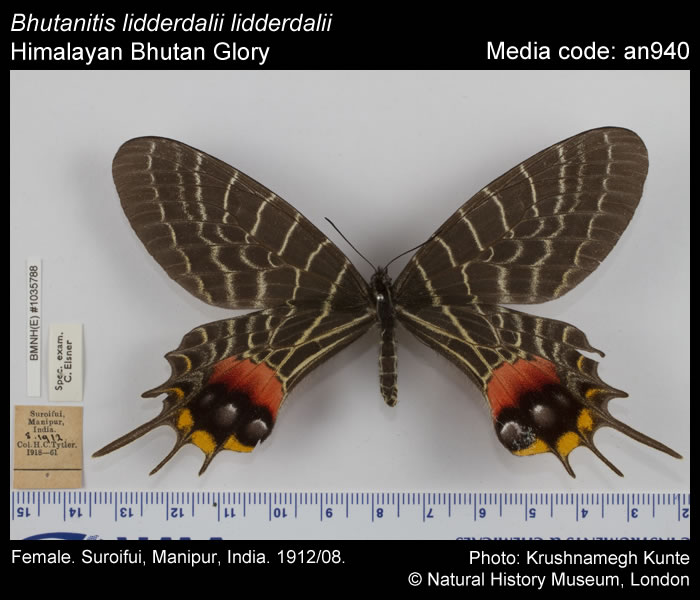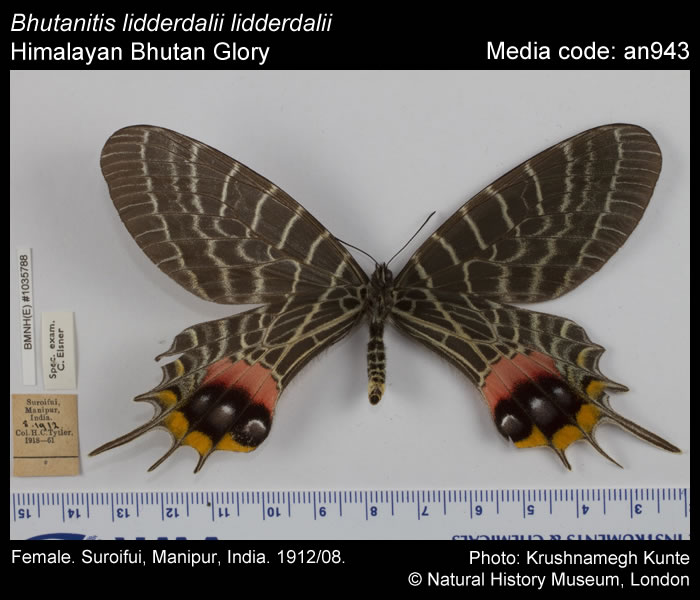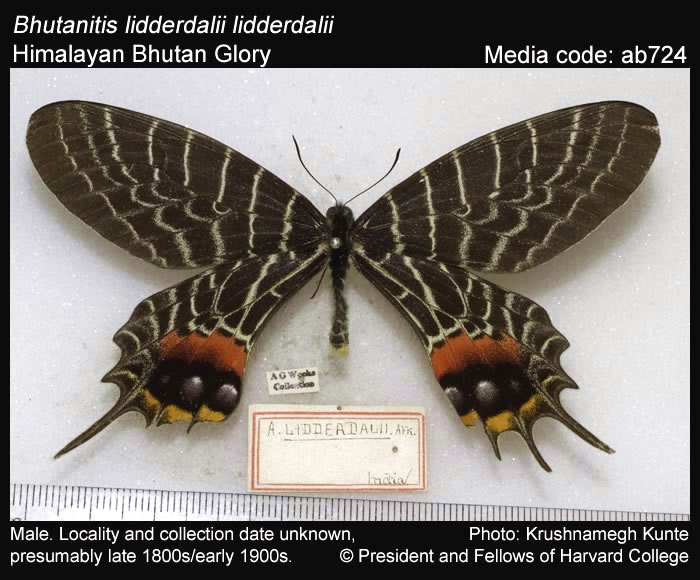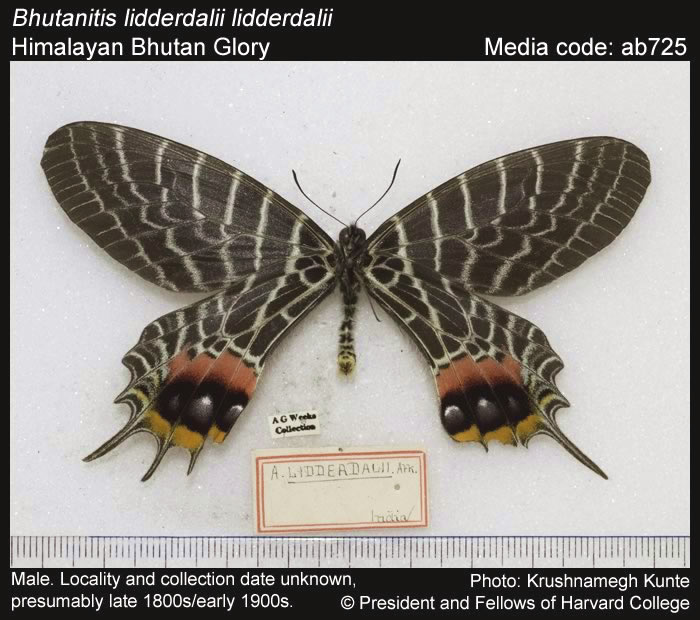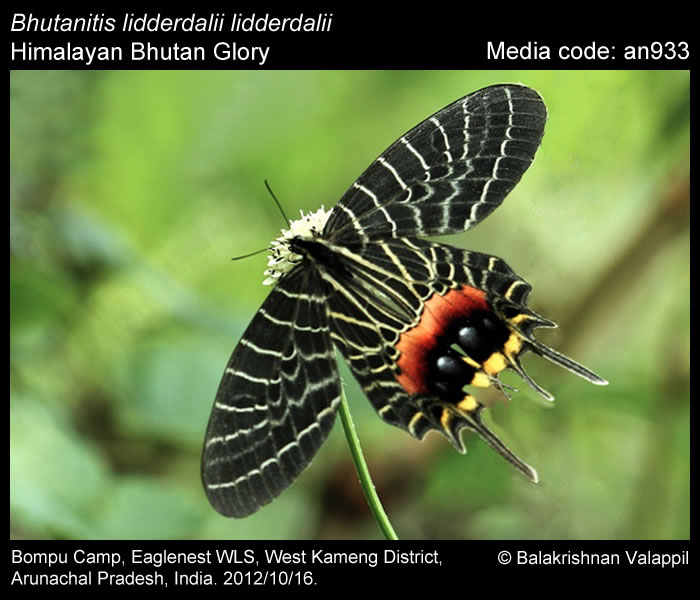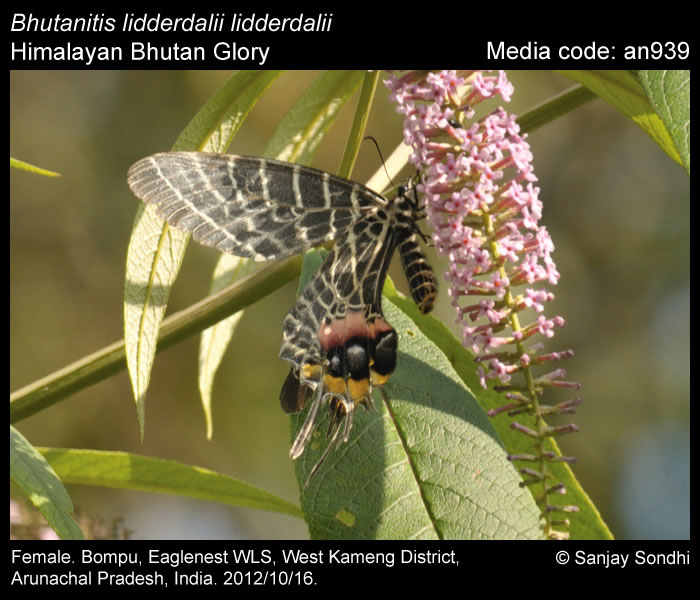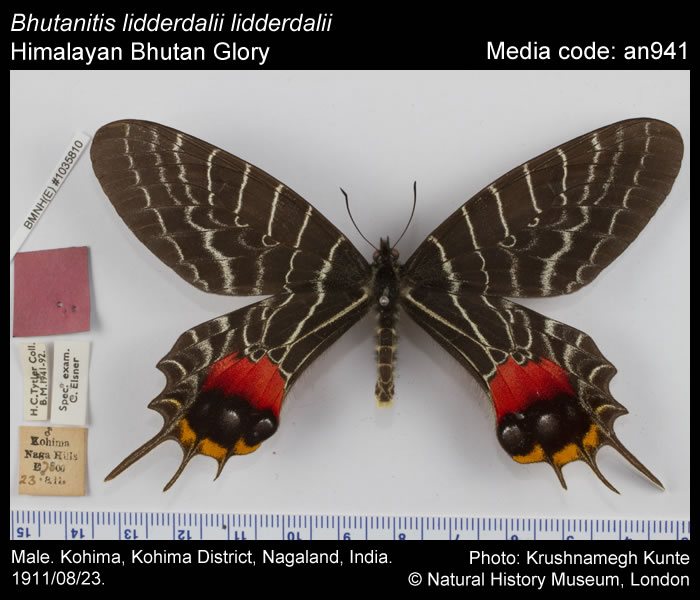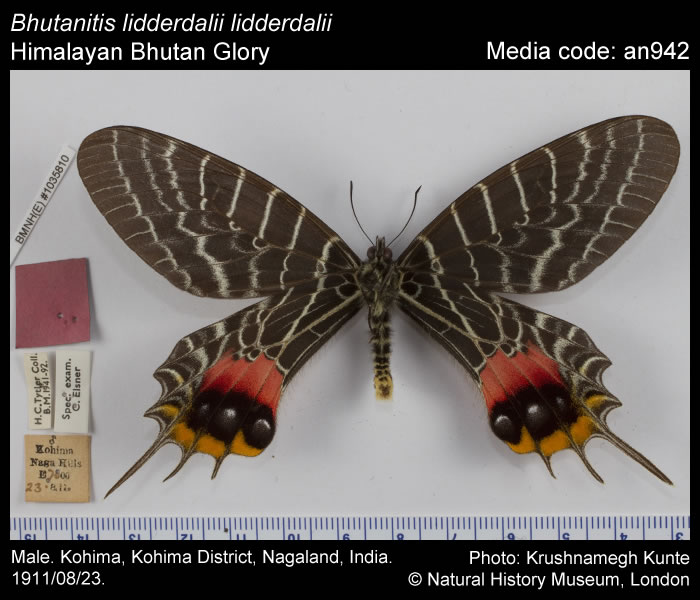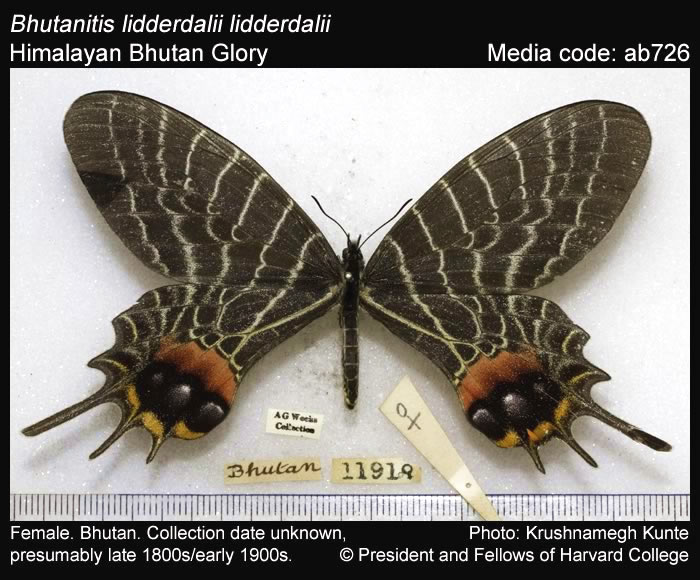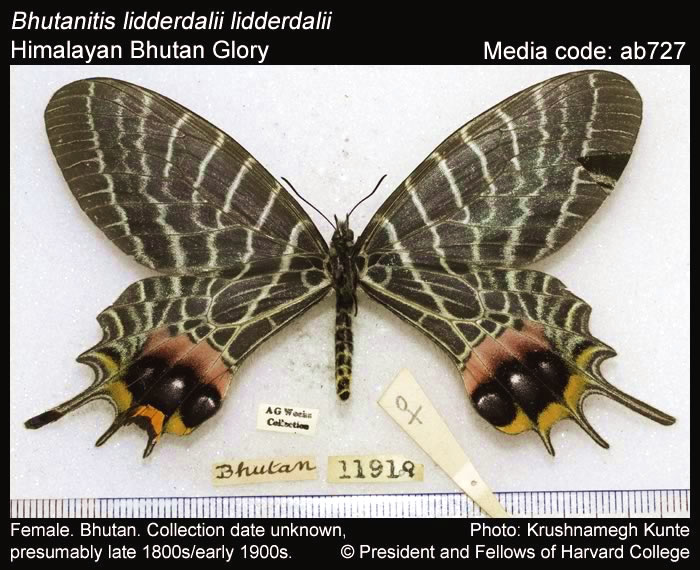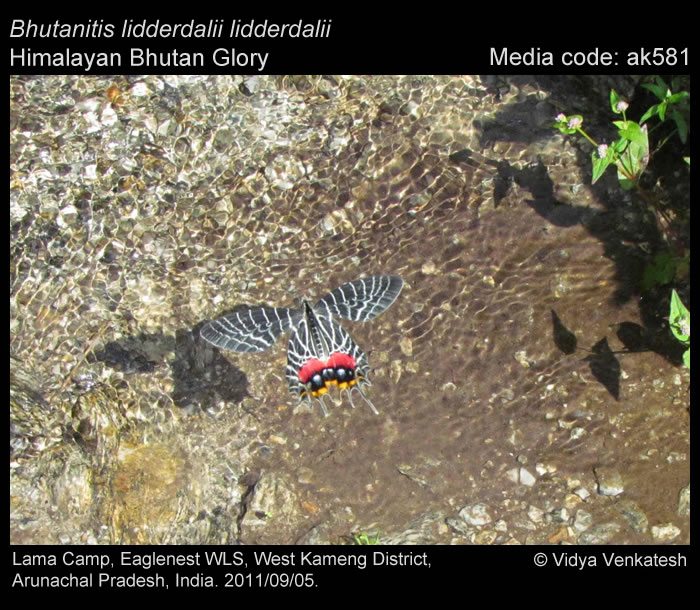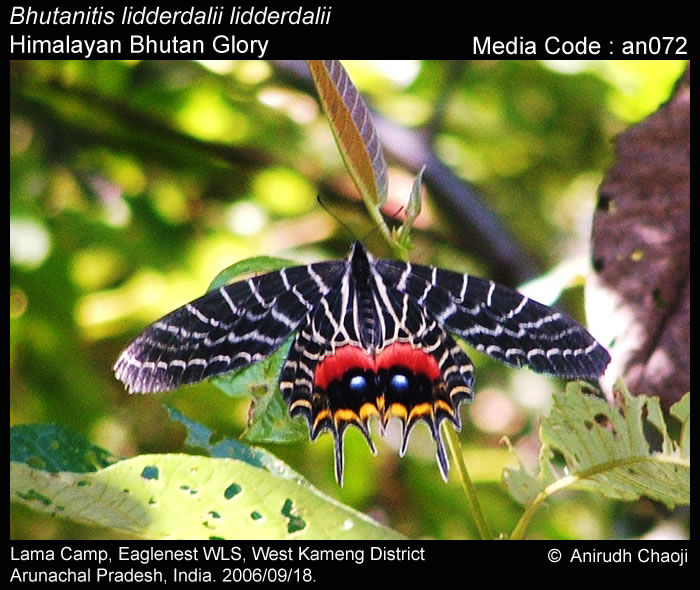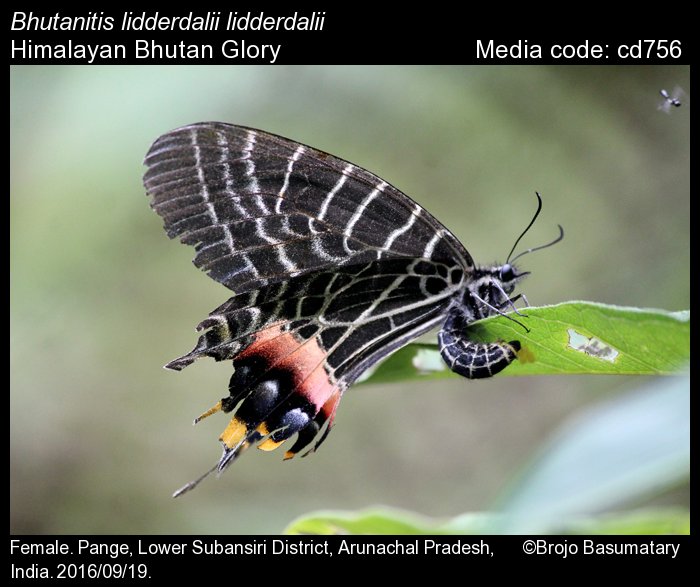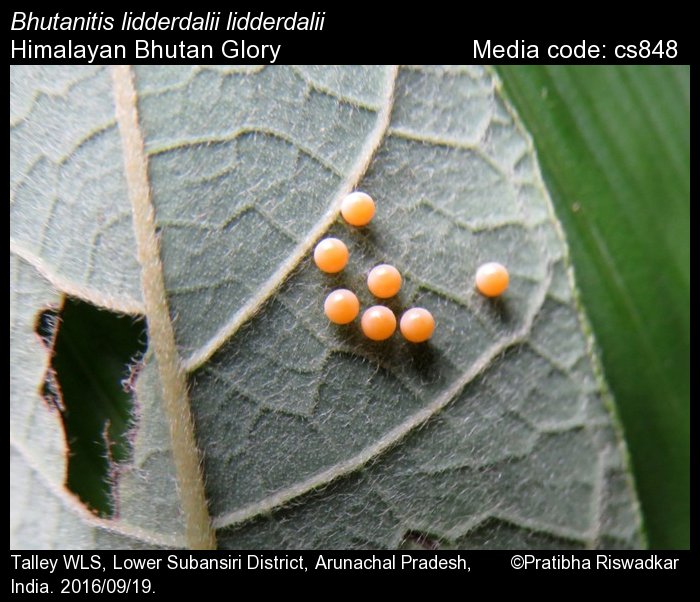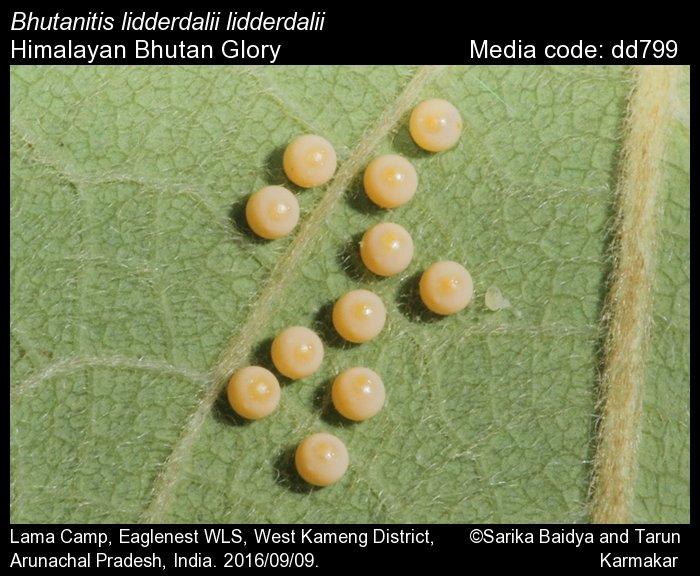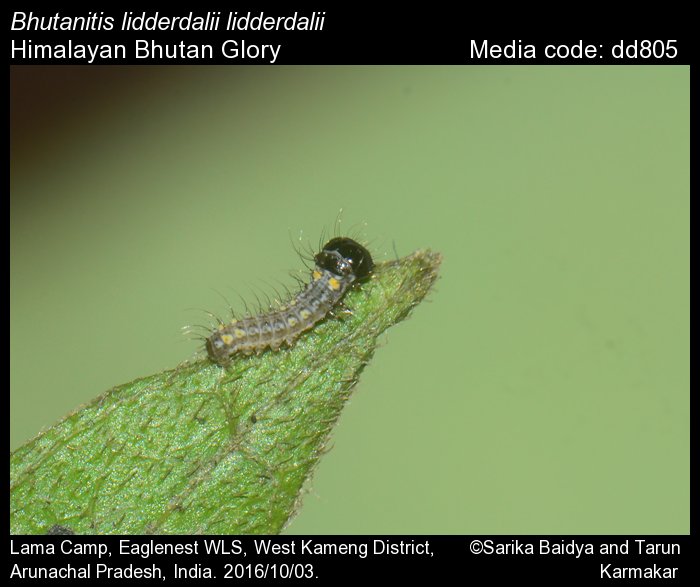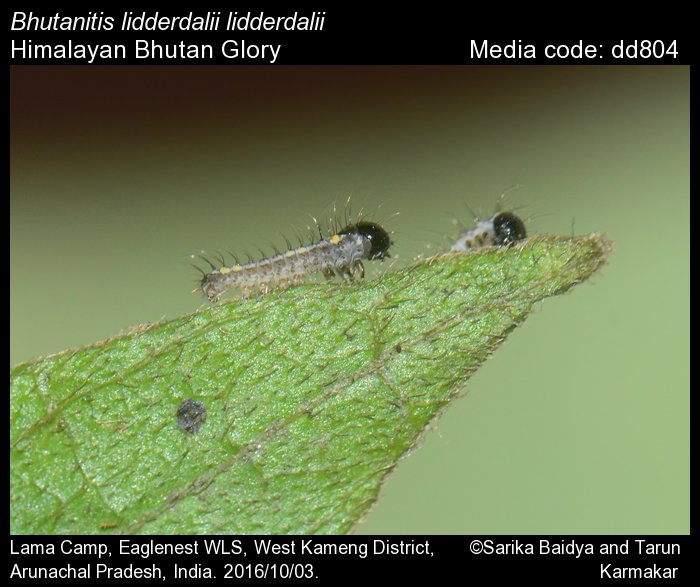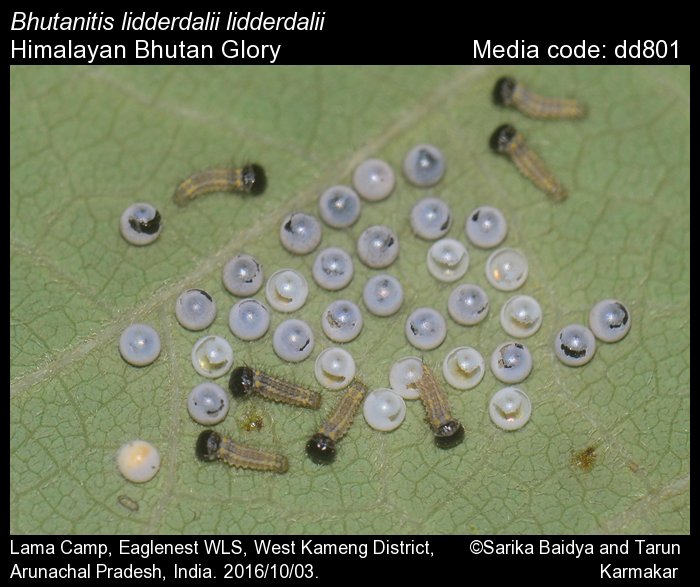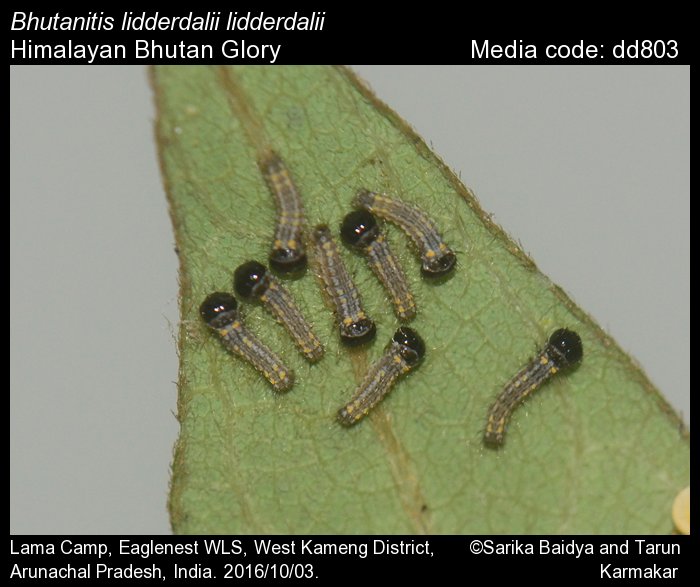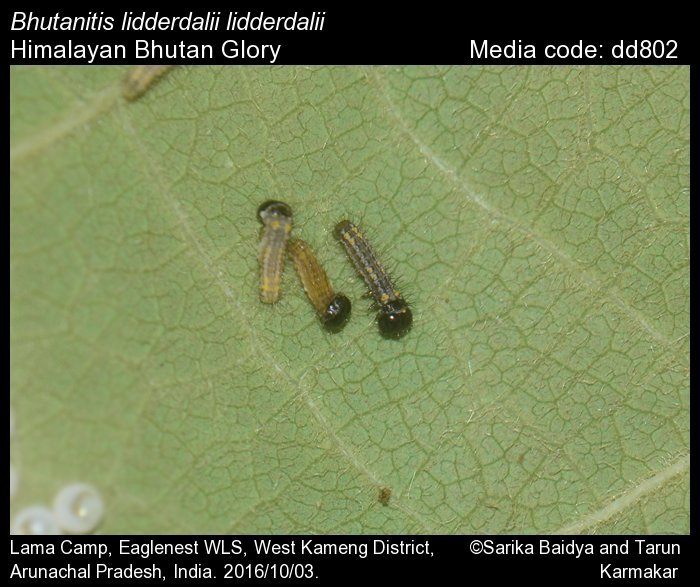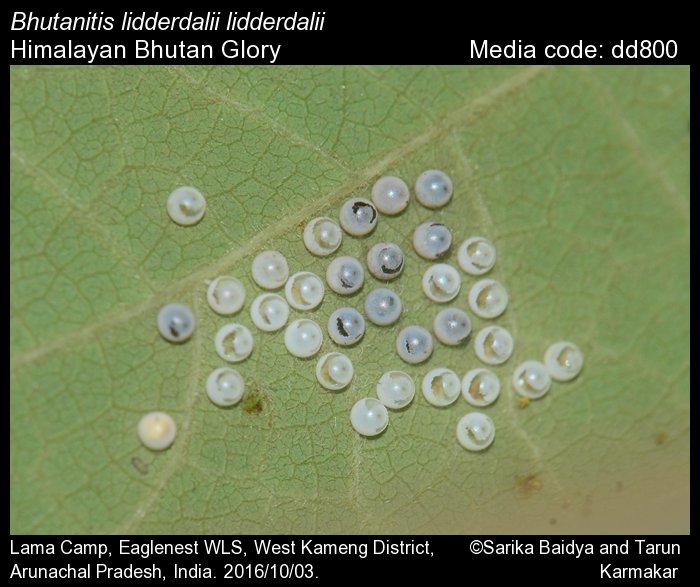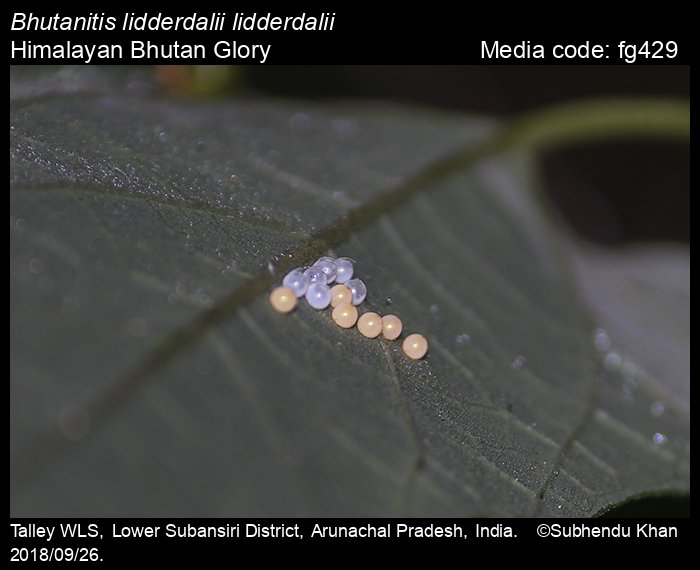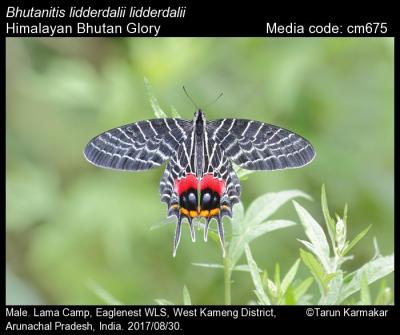
Subspecies in India
(1) Bhutanitis lidderdalii lidderdalii Atkinson, 1873 – Himalayan Bhutan Glory
Conservation and Special status
![]() The species is legally protected in India under Schedule I of the Wildlife (Protection) Amendment Act, 2022.
The species is legally protected in India under Schedule I of the Wildlife (Protection) Amendment Act, 2022.
Photo Gallery and Species Biology
The Bhutan Glory is known to have up to two broods: the first in May-June, and the second from August to October. Recently, only the August-October brood has been recorded from Arunachal Pradesh, so it appears that the species is univoltine (single-brooded) in the western Arunachal Pradesh. However, the May-June brood has historically been reported from the Khasi Hills and the Nagaland-Manipur area. Whether it has a second generation in August-October in this area is unknown.
The eggs are laid typically in large batches of several dozen on pipevines (Aristolochia spp.). Caterpillars live in family groups. In Eaglenest area in Arunachal Pradesh, pupae from the August-October brood overwinter, adults emerging the next August.
Subspecies lidderdalii is endemic to the E. Himalaya, occurring Sikkim eastward into Bhutan, Arunachal Pradesh, Manipur, Nagaland, and N. Myanmar.
The species ranges over the E. Himalaya, N. Myanmar, SW China (Szechwan and Yunnan Provinces), and N. Indo-China. It used to occur in N. Thailand as subspecies ocellatomaculata, but is now reportedly locally extinct (Ek-Amnuay 2010).

Wingspan: 90-110mm (Evans 1932). Upperside: Black with pale white or cream-colored transverse lines running from costa to dorsum on both wings. Hindwing tornus has a prominent large patch with yellow-orange submarginal lunules, central bluish-black patch centered white between the veins, and a crimson post-discal band towards the basal edge of the black patch. Forewings are long and rounded with convex termen, and hindwings have three tails. Underside: similar to the upperside, but paler.
The antennae, head, thorax and abdomen are black, while the abdomen is laterally crossed by ochreous white lines and abdominal segments are marked by lines of similar colour. The body and wings are reported to give off a pleasant odour.
The sexes are alike.
Similar species in India: Bhutanitis ludlowi – Mystical Bhutan Glory (also known as Ludlow's Bhutan Glory), which is endemic to Bhutan and Western Arunachal Pradesh so far as known. It is distinguished based on less toothed hindwing, grey or dirty yellow submarginal lunules on upperside of hindwing (bold and broadly yellow in lidderdalii), and broader forewings compared to lidderdalii.
![]() The species is legally protected in India under Schedule I of the Wildlife (Protection) Amendment Act, 2022.
The species is legally protected in India under Schedule I of the Wildlife (Protection) Amendment Act, 2022.
The Bhutan Glory flies between 1,500 and 2,500m asl in the Himalaya and Manipur-Naga Hills in northeast India. It has a leisurely, coasting flight, which has been compared to that of the Tree-Nymph butterflies (Idea spp). This is a habitual hill-topper, found more commonly on ridges rather than in valleys, and it usually flies high among the tree-tops. When seen from below, the greyish underside of the butterfly makes it inconspicuous in the canopy shade.
At rest the butterfly spreads its wings rather than fold them over the back similar to many Papilio but unlike most other butterflies. Then it more or less covers its hindwings with the forewings, largely concealing the bright tricolored tornal patches on the hindwings.
Both sexes feed from a wide variety of flowers, especially from forest trees.
The species is likely to be unpalatable because it uses the toxic Aristolochia spp. as its larval host plants. Adult butterflies have not been experimentally tested for toxicity.
The (sub)species is considered rare in India, and it has been legally protected under India's WildLife (Protection) Act, 1972 (Anonymous 1997). Worldwide, Colllins and Morris (1985) gave its status as "Insufficiently known", arguing that it is widely distributed and hence unlikely to be in danger at the moment. However, they acknowledge that more information is needed on this comparatively poorly known species. Three extralimital species of Bhutanitis are listed in the IUCN's Red List, but not B. lidderdalii.
| State | Jan | Feb | Mar | Apr | May | Jun | Jul | Aug | Sep | Oct | Nov | Dec | No date |
|---|---|---|---|---|---|---|---|---|---|---|---|---|---|
| Andaman and Nicobar Islands UT | |||||||||||||
| Andhra Pradesh | |||||||||||||
| Arunachal Pradesh | 41 | 21 | 9 | ||||||||||
| Assam | |||||||||||||
| Bihar | |||||||||||||
| Chandigarh | |||||||||||||
| Chhattisgarh | |||||||||||||
| Dadra & Nagar Haveli UT | |||||||||||||
| Daman & Diu UT | |||||||||||||
| Delhi | |||||||||||||
| Goa | |||||||||||||
| Gujarat | |||||||||||||
| Haryana | |||||||||||||
| Himachal Pradesh | |||||||||||||
| Jammu and Kashmir UT | |||||||||||||
| Jharkhand | |||||||||||||
| Karnataka | |||||||||||||
| Kerala | |||||||||||||
| Ladakh UT | |||||||||||||
| Lakshadweep | |||||||||||||
| Madhya Pradesh | |||||||||||||
| Maharashtra | |||||||||||||
| Manipur | 1 | ||||||||||||
| Meghalaya | |||||||||||||
| Mizoram | |||||||||||||
| Nagaland | 1 | 2 | 2 | ||||||||||
| Odisha | |||||||||||||
| Puducherry UT | |||||||||||||
| Punjab | |||||||||||||
| Rajasthan | |||||||||||||
| Sikkim | |||||||||||||
| Tamil Nadu | |||||||||||||
| Tripura | |||||||||||||
| Uttar Pradesh | |||||||||||||
| Uttarakhand | |||||||||||||
| West Bengal | |||||||||||||
| Total | 43 | 23 | 11 |
Aristolochia griffithii, A. kaempferi, and A. manchuriensis (Robinson et al. 2001).
Anonymous. 1997. The WildLife (Protection) Act, 1972 (as amended up to 1993) with rules uptil 1995. Natraj Publishers, Dehra Dun.
Collins, N. M. and M. G. Morris. 1985. Threatened Swallowtails of the World: The IUCN Red Data Book. IUCN Protected Area Programme Series. Gland, Switzerland and Cambridge, U.K.: IUCN. p. 44.
Ek-Amnuay, P. 2010. The Great Bhutan, Bhutanitis lidderdalii ocellatomaculata, an extinct butterfly from Thailand not long ago. Siam Insect Zoo & Museum.
Evans, W. H. 1932. The Identification of Indian butterflies. 2nd ed. Bombay Natural History Society, Mumbai.
Robinson, G. S., P. R. Ackery, I. J. Kitching, G. W. Beccaloni and L. M. Hernández. 2001. Hostplants of the Moth and Butterfly Caterpillars of the Oriental Region. Natural History Museum, London.
Page citation
Baidya, S., T. Karmakar, Baindur, A., and K. Kunte. 2025. Bhutanitis lidderdalii Atkinson, 1873 – Bhutan Glory. In Kunte, K., S. Sondhi, and P. Roy (Chief Editors). Butterflies of India, v. 4.12. Published by the Indian Foundation for Butterflies. URL: https://www.ifoundbutterflies.org/bhutanitis-lidderdalii, accessed 2025/12/01.
